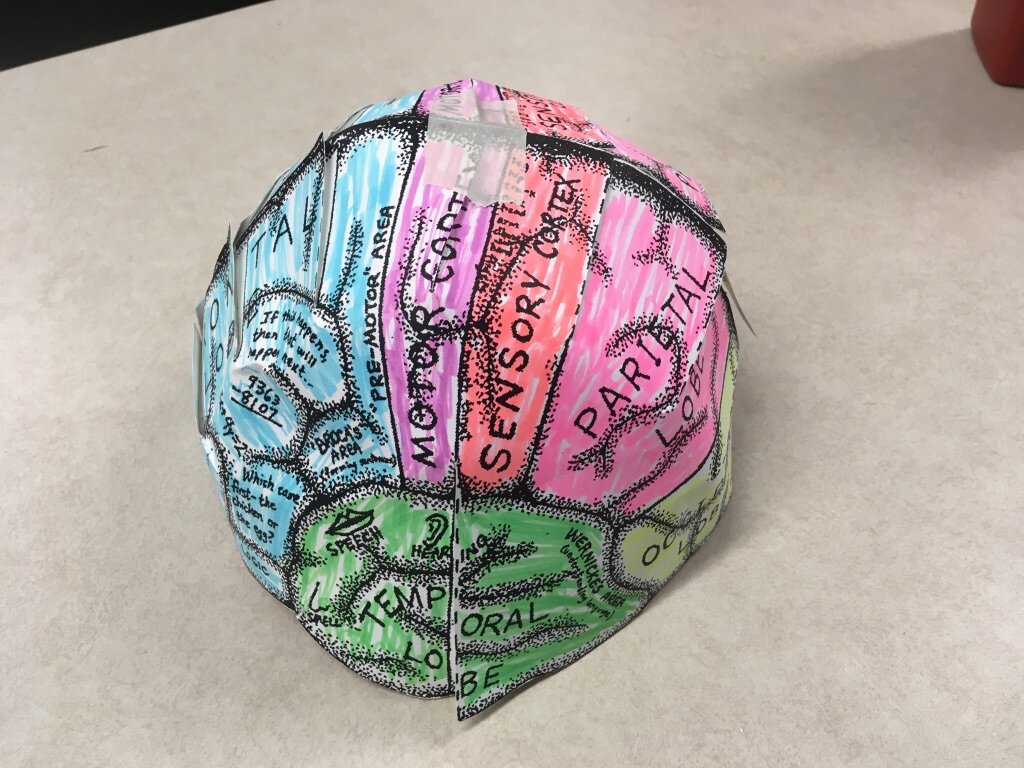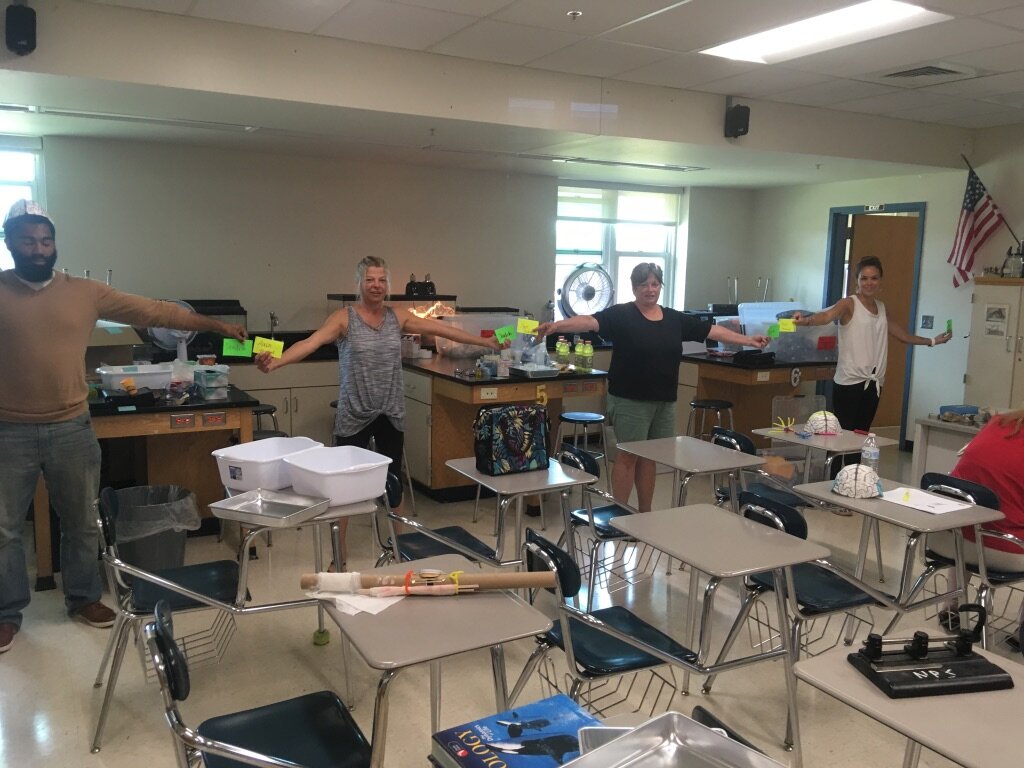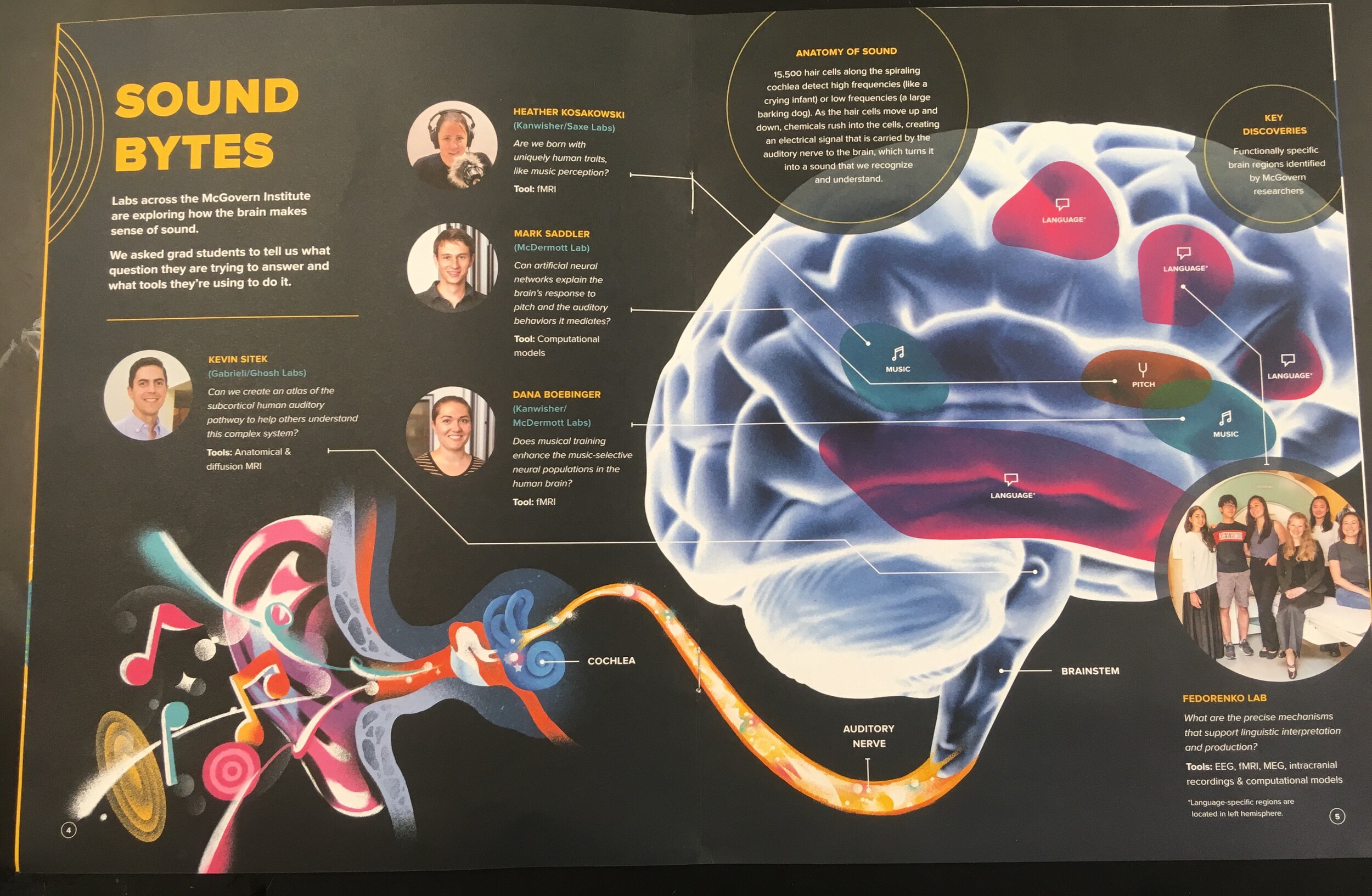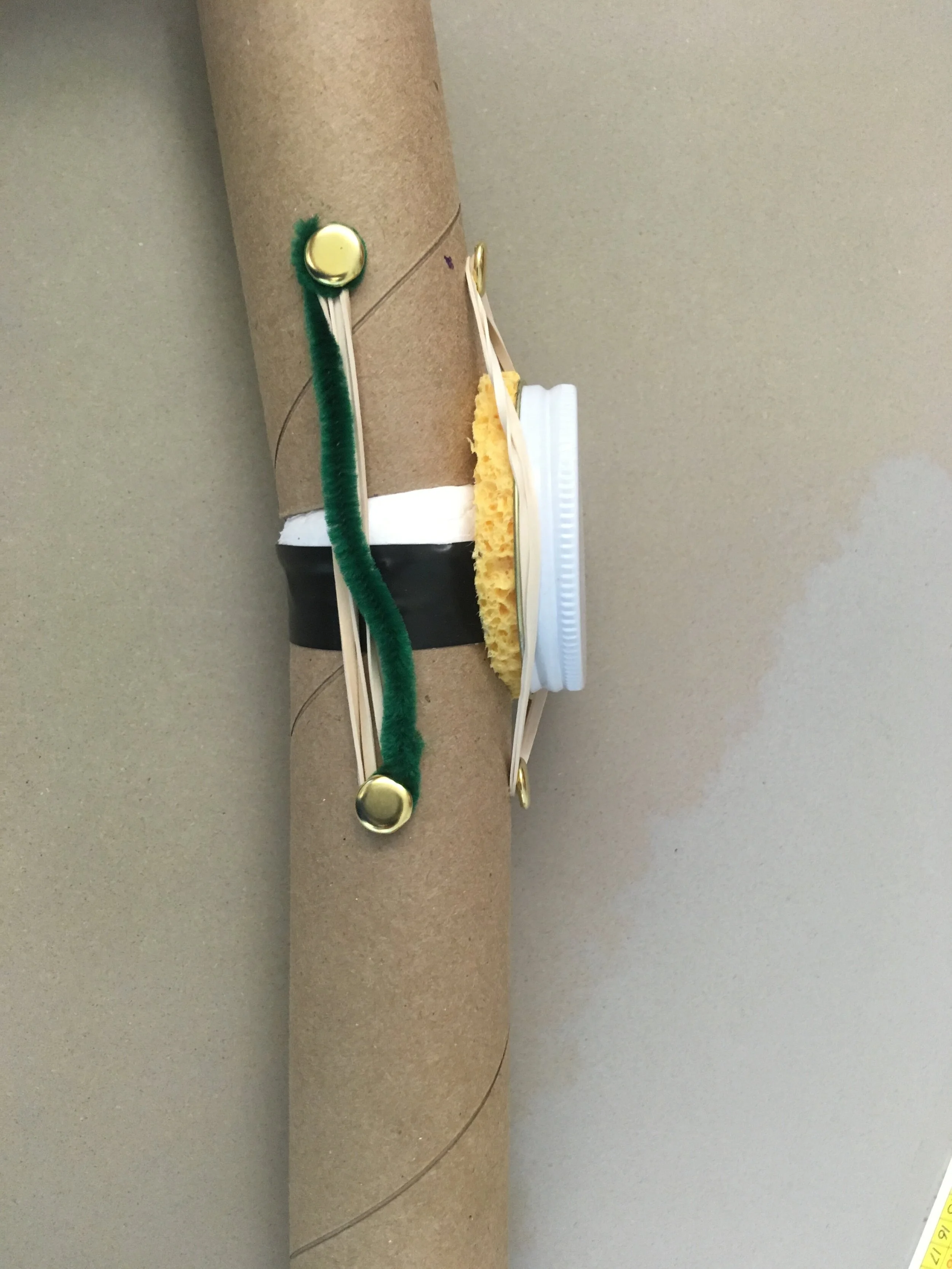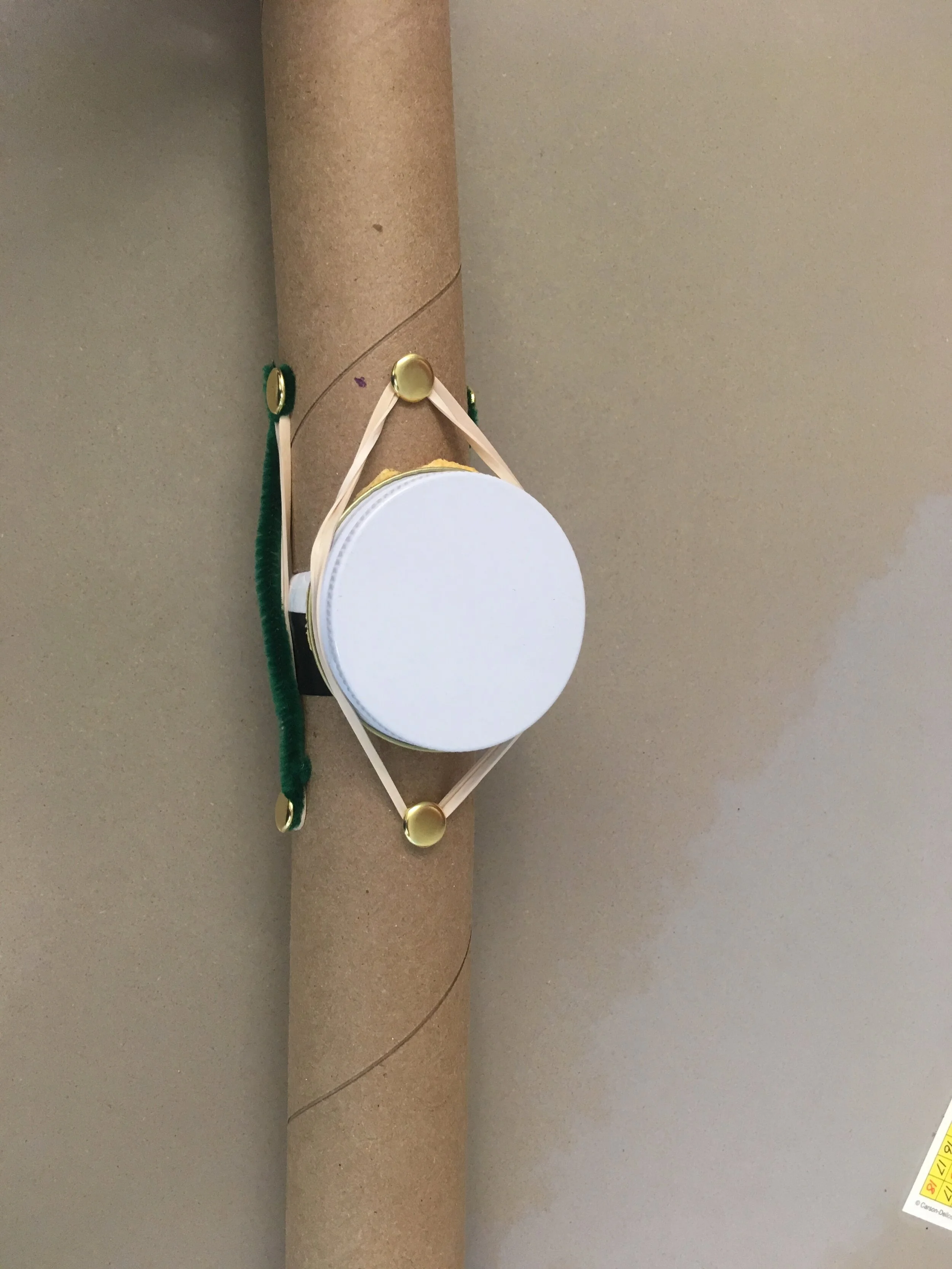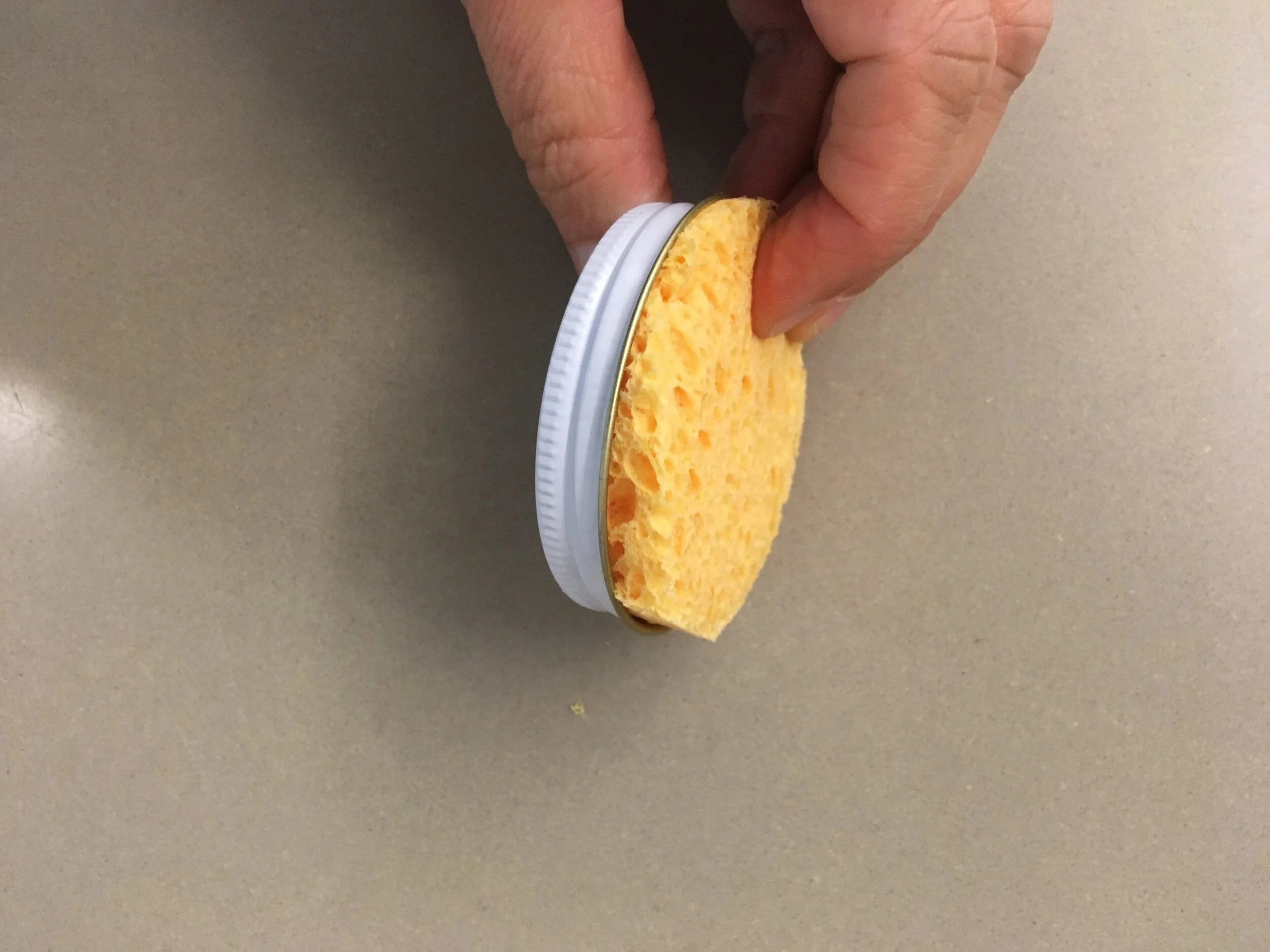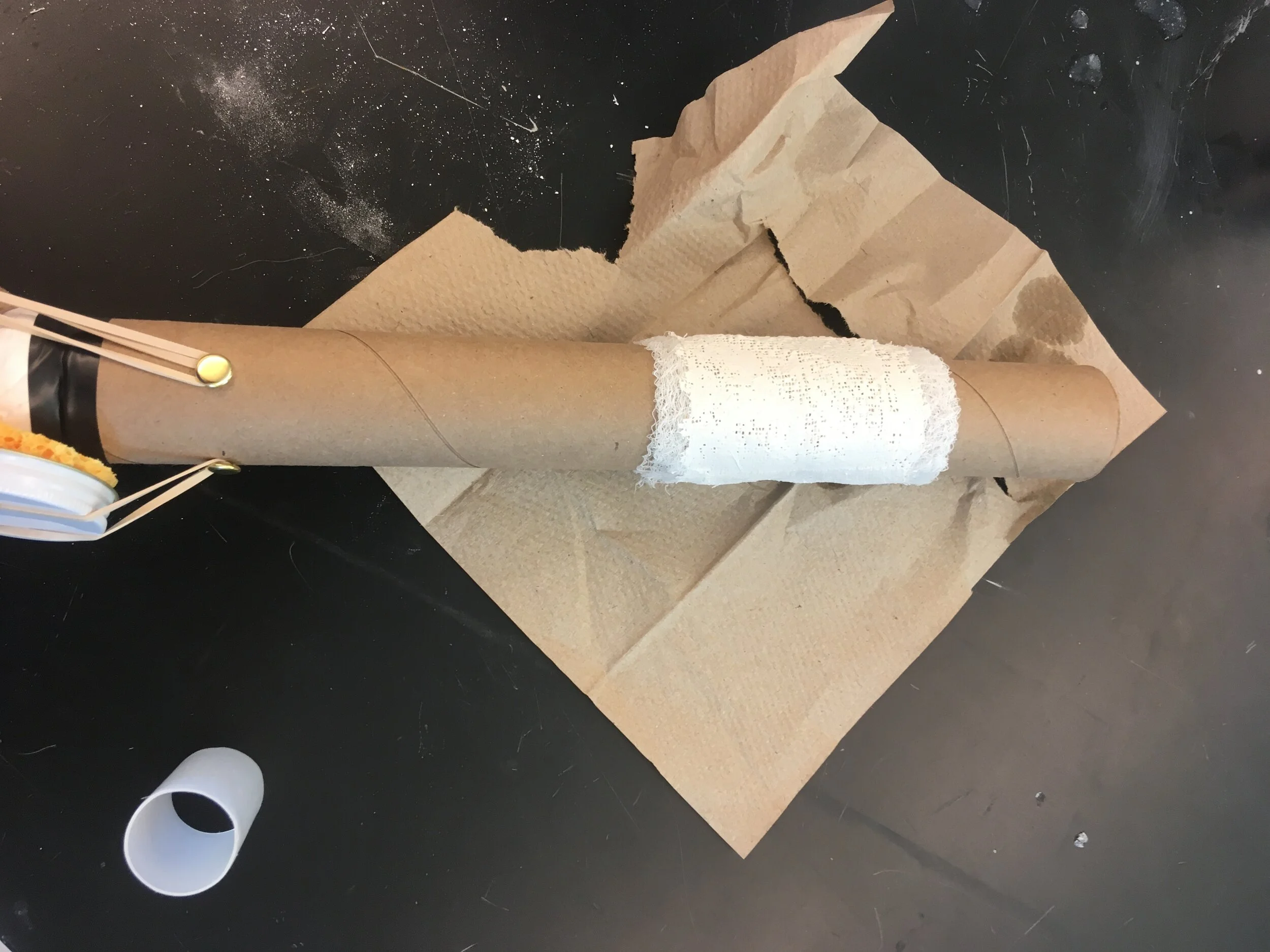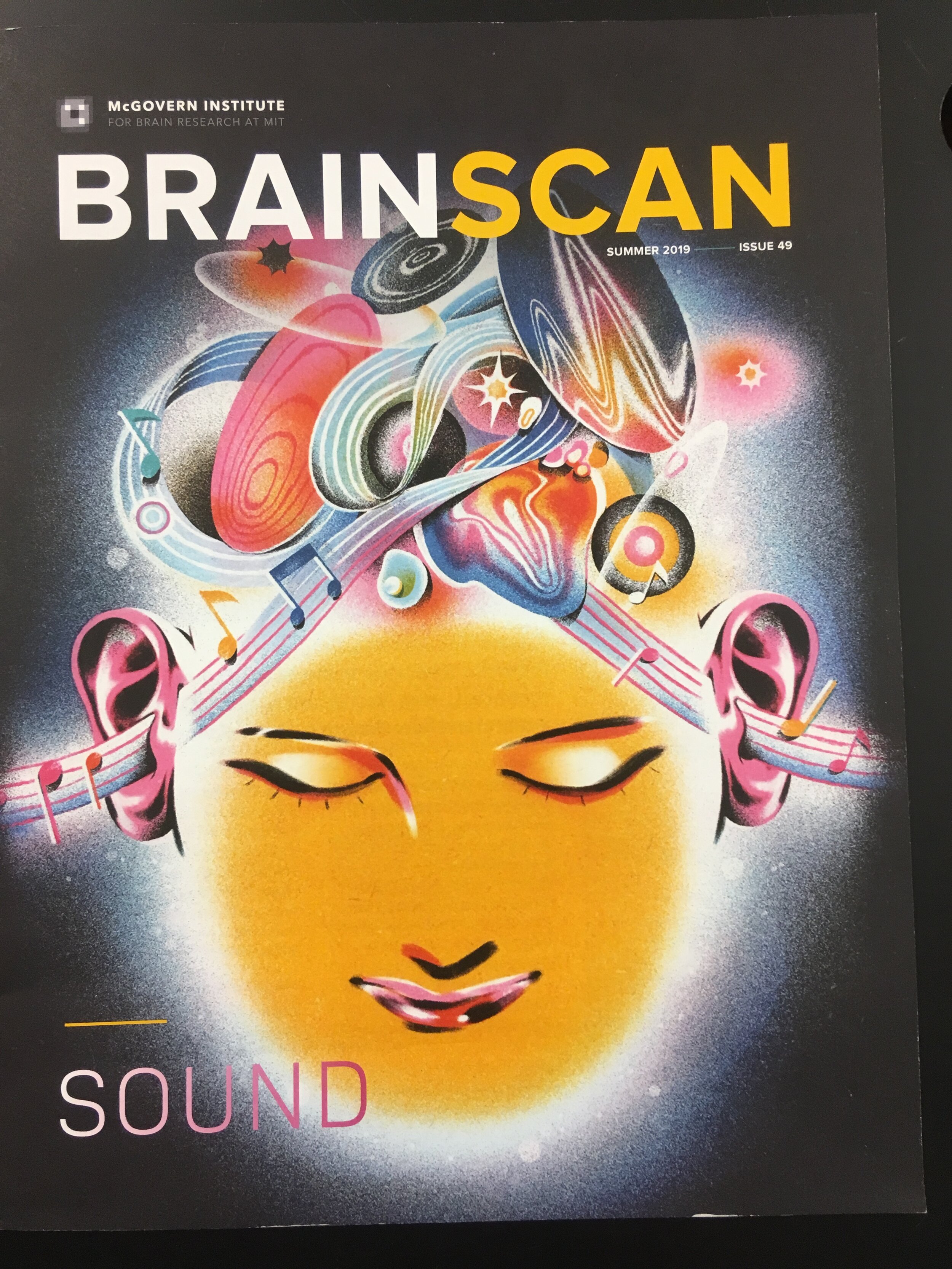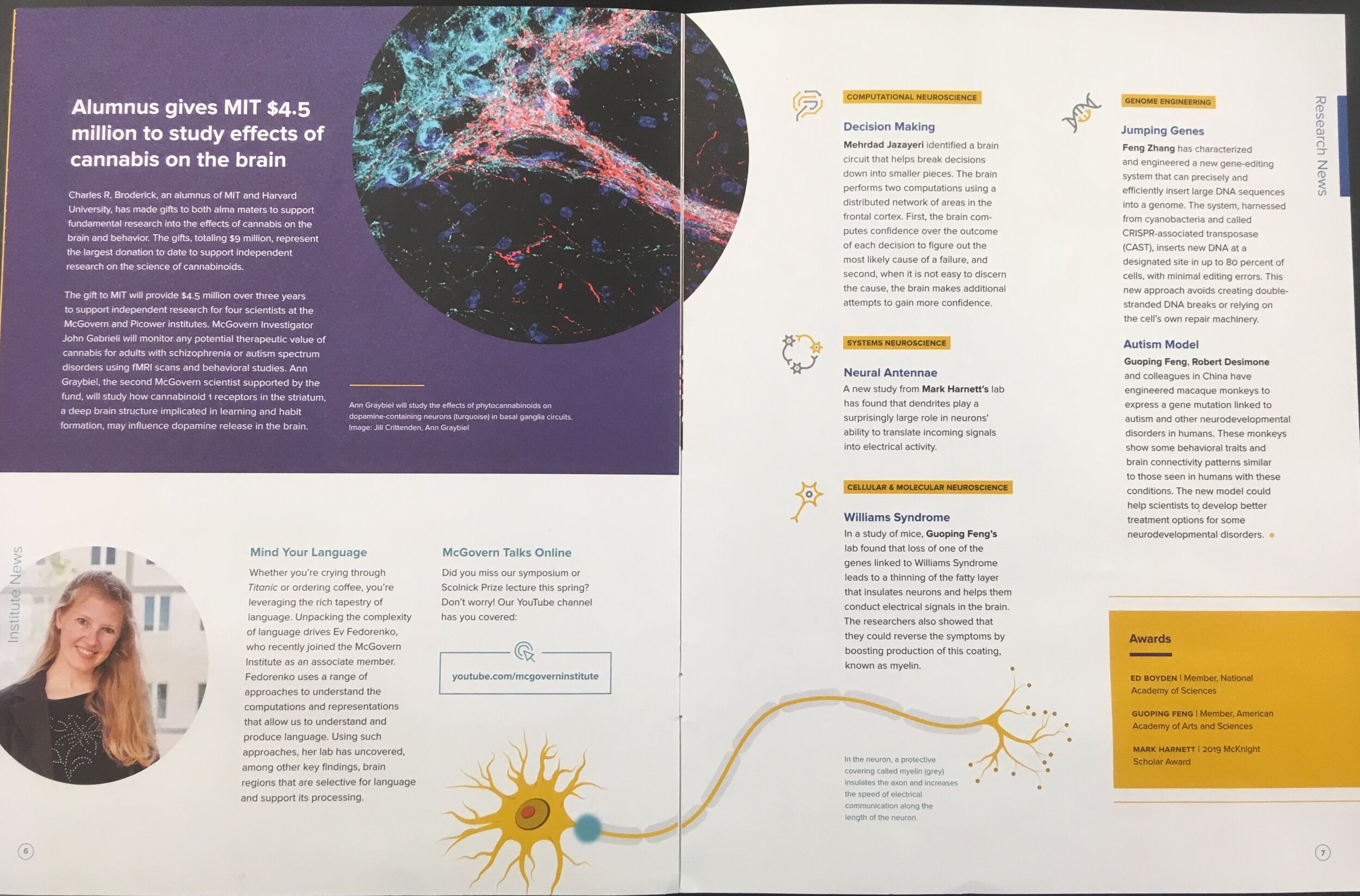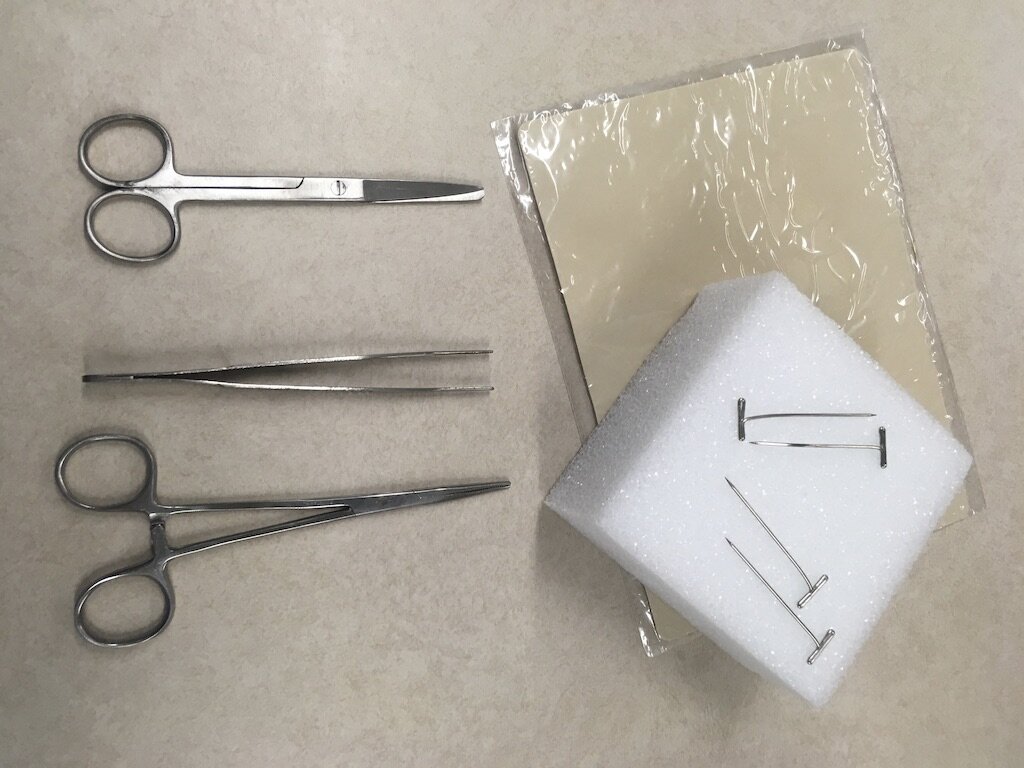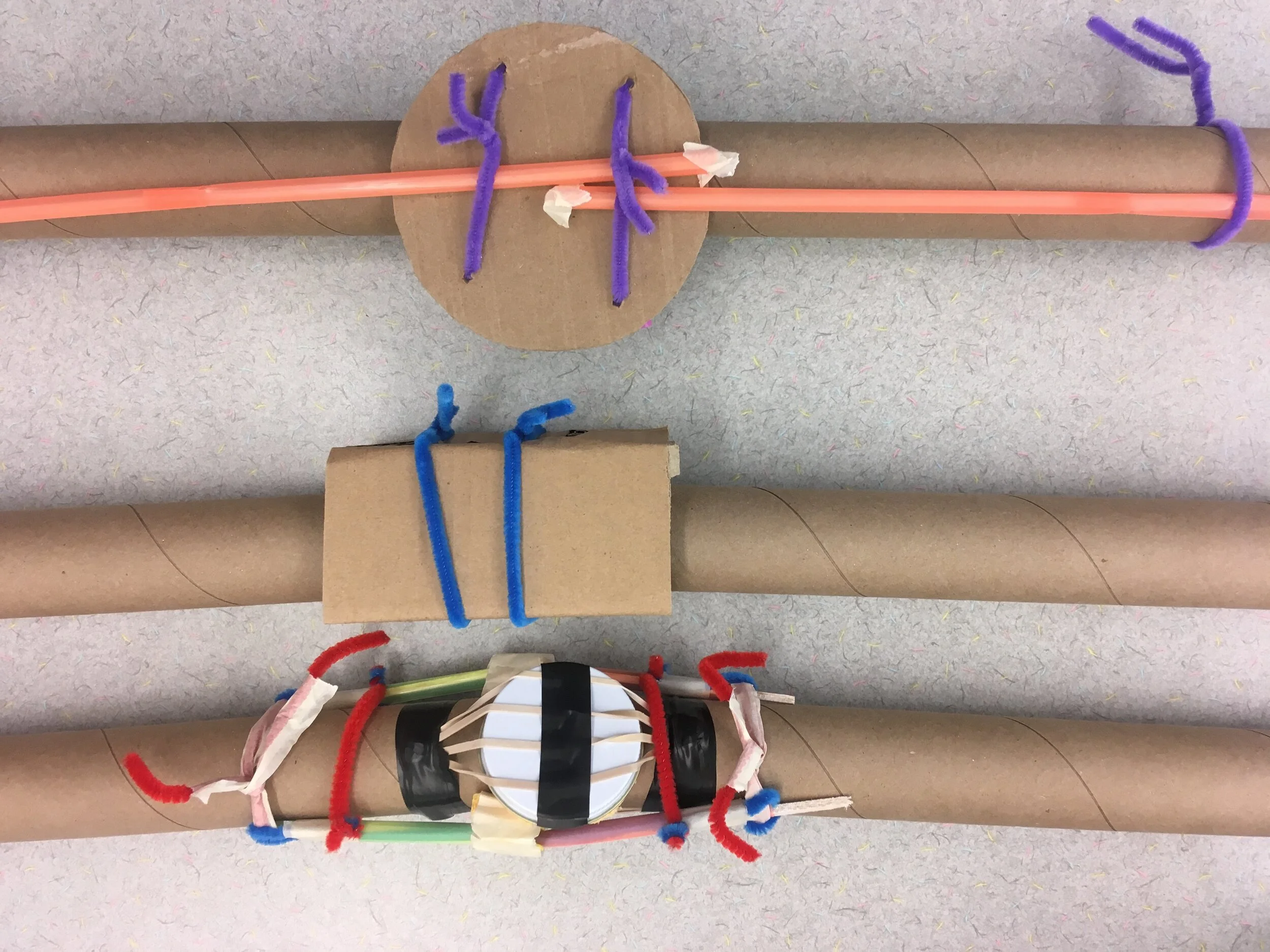
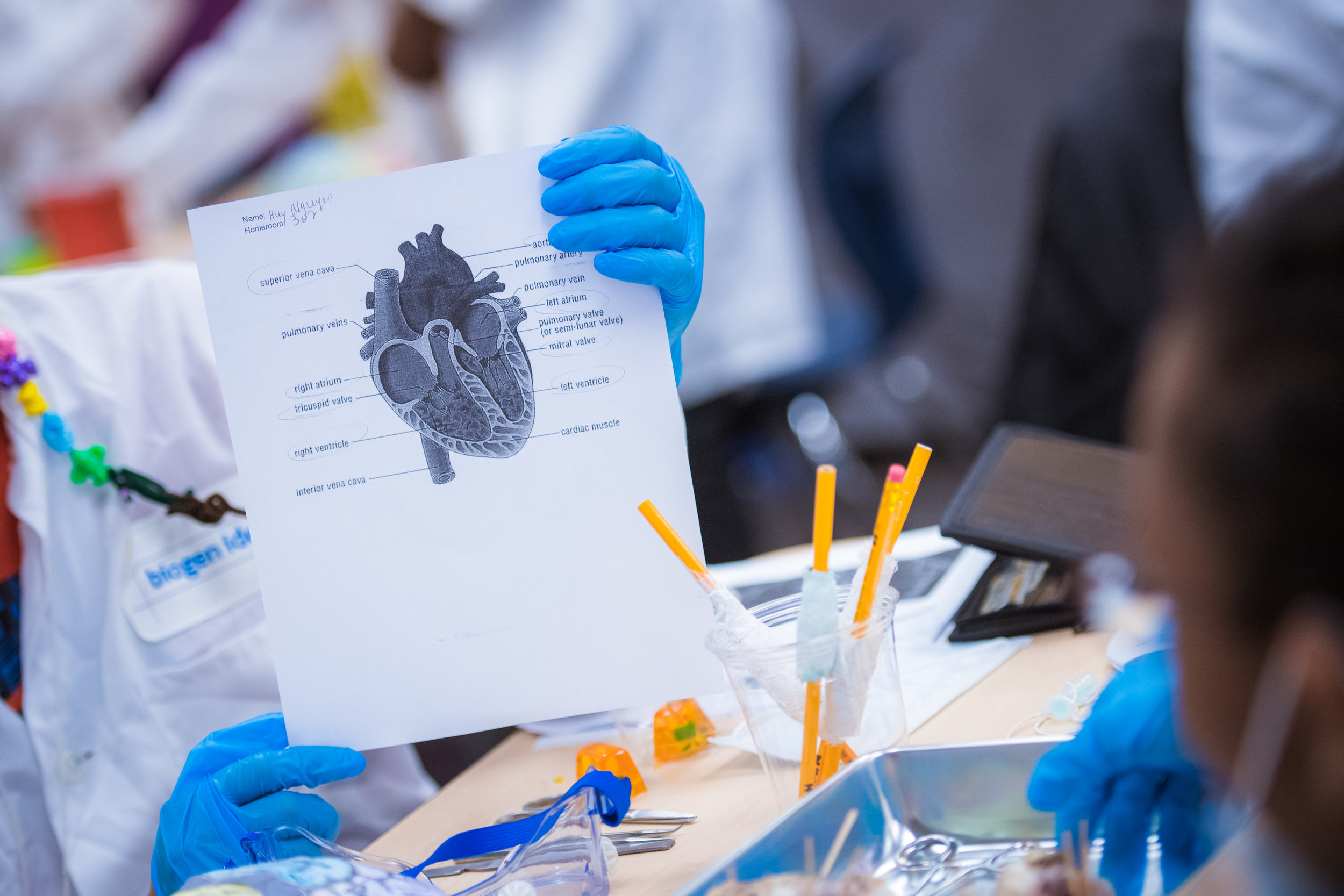
Heart Dissection
Students prepare to dissect a sheep heart
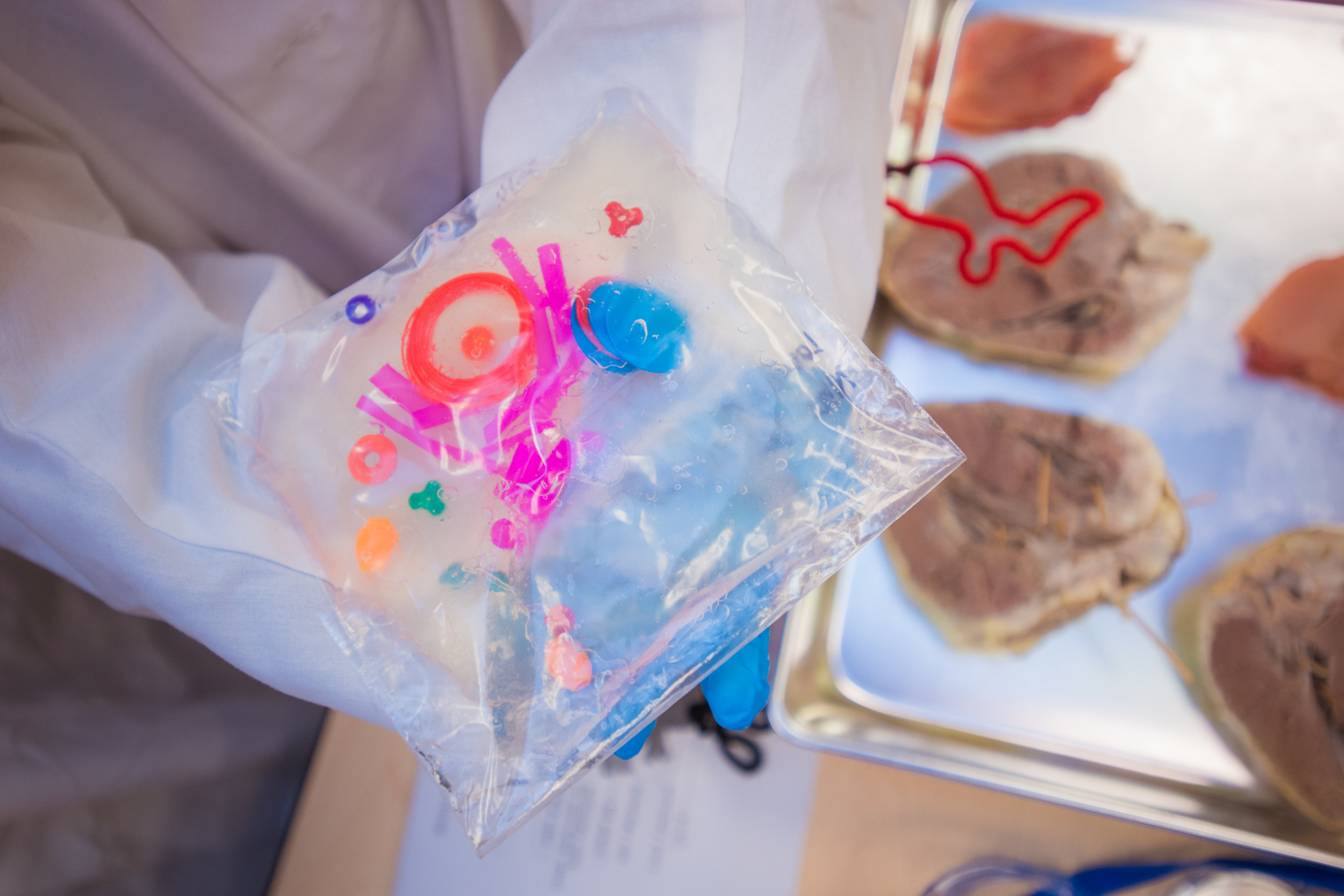
Heart Dissection
Students prepare to dissect a sheep heart

Heart Dissection
Students dissect the sheep heart

Heart Dissection
Students dissect the sheep heart together
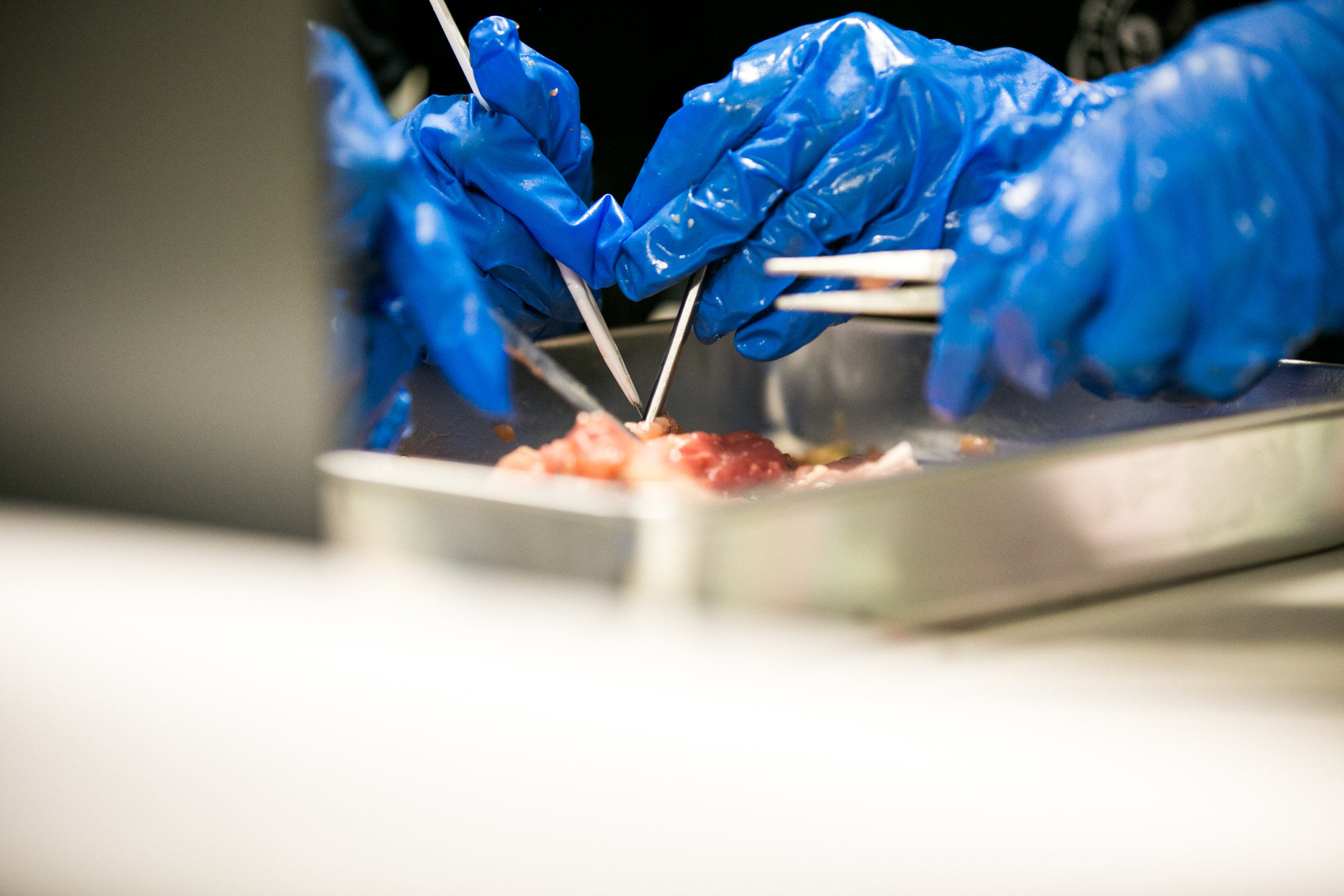
Heart Dissection
Students work together to dissect the sheep heart
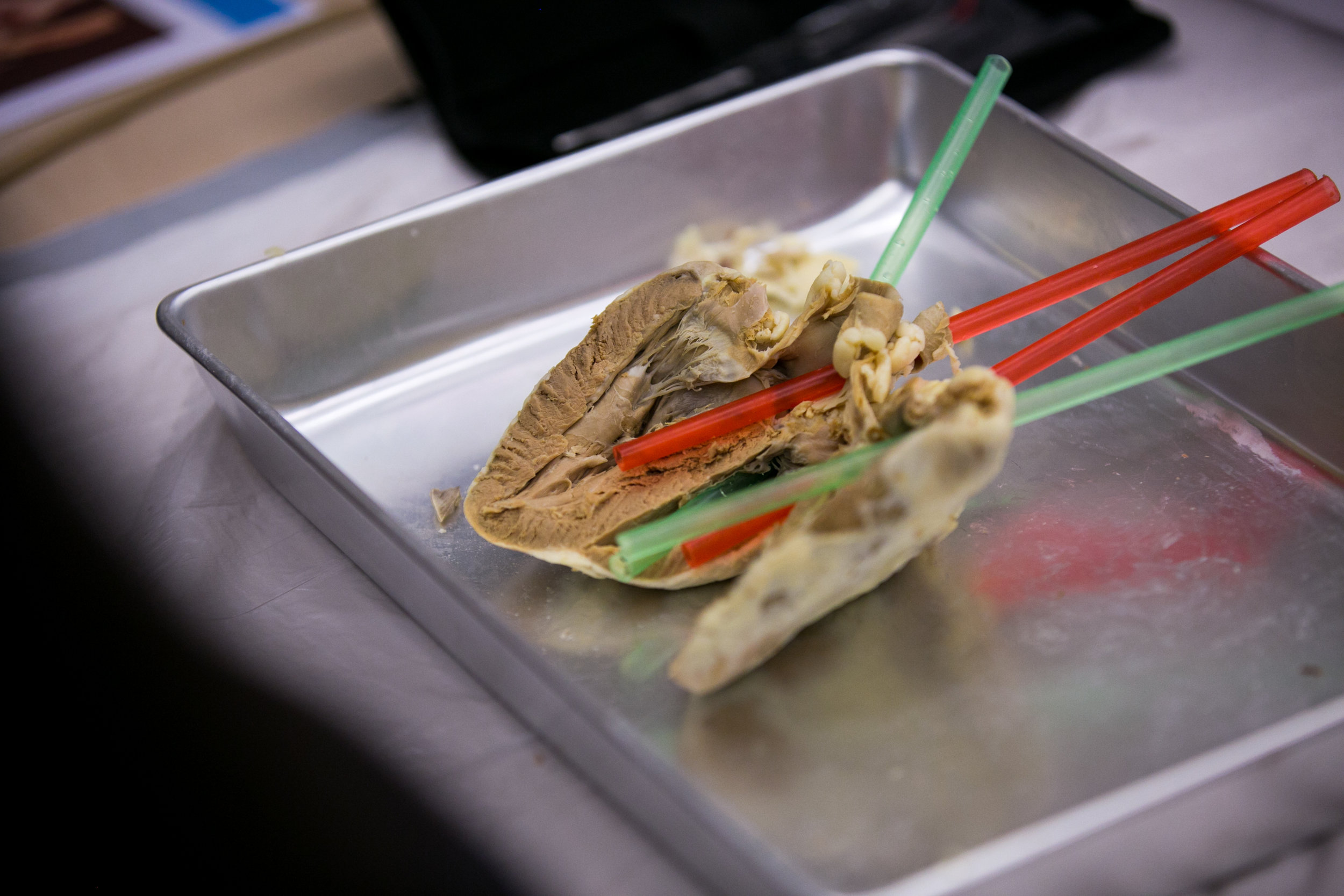
Heart Dissection

Heart with Blood Vessel Labels
Heart with labels aorta, superior vena cava, pulmonary artery, and pulmonary vein.
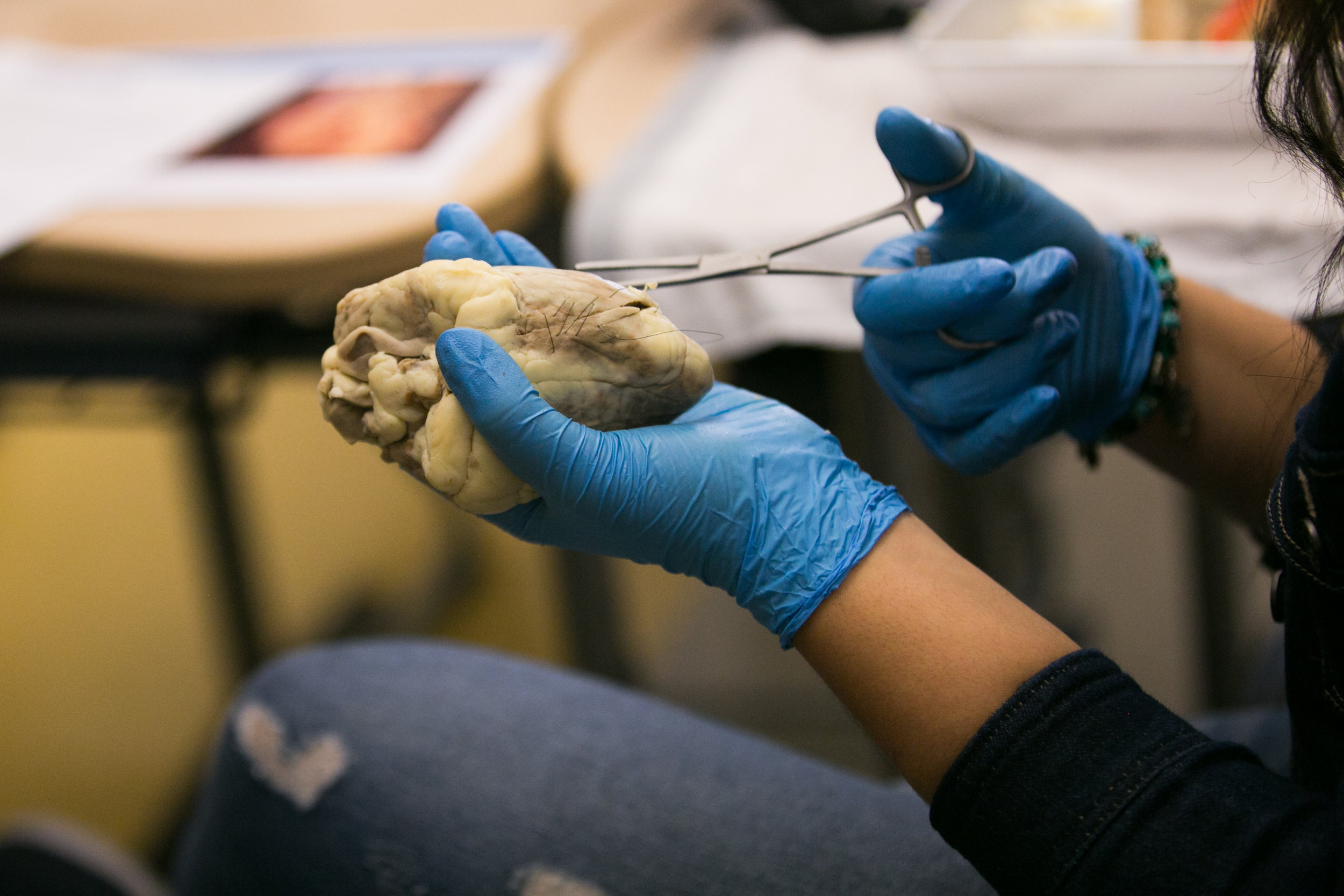
Heart Dissection
Student dissects a sheep heart
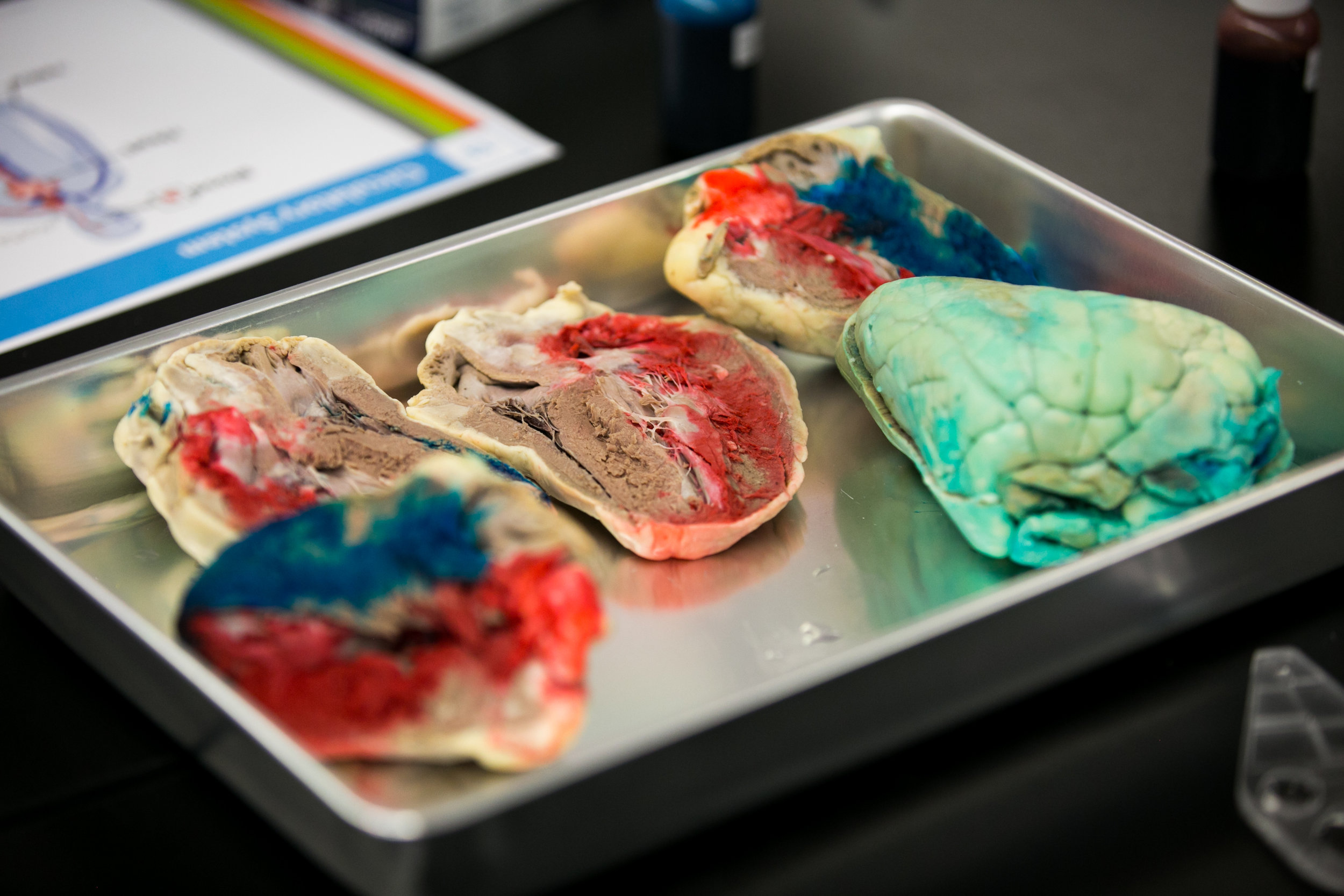
Heart Dissection

Heart Dissection
Student shows the dissected sheep heart with different colored dyes used to show the different parts of the heart

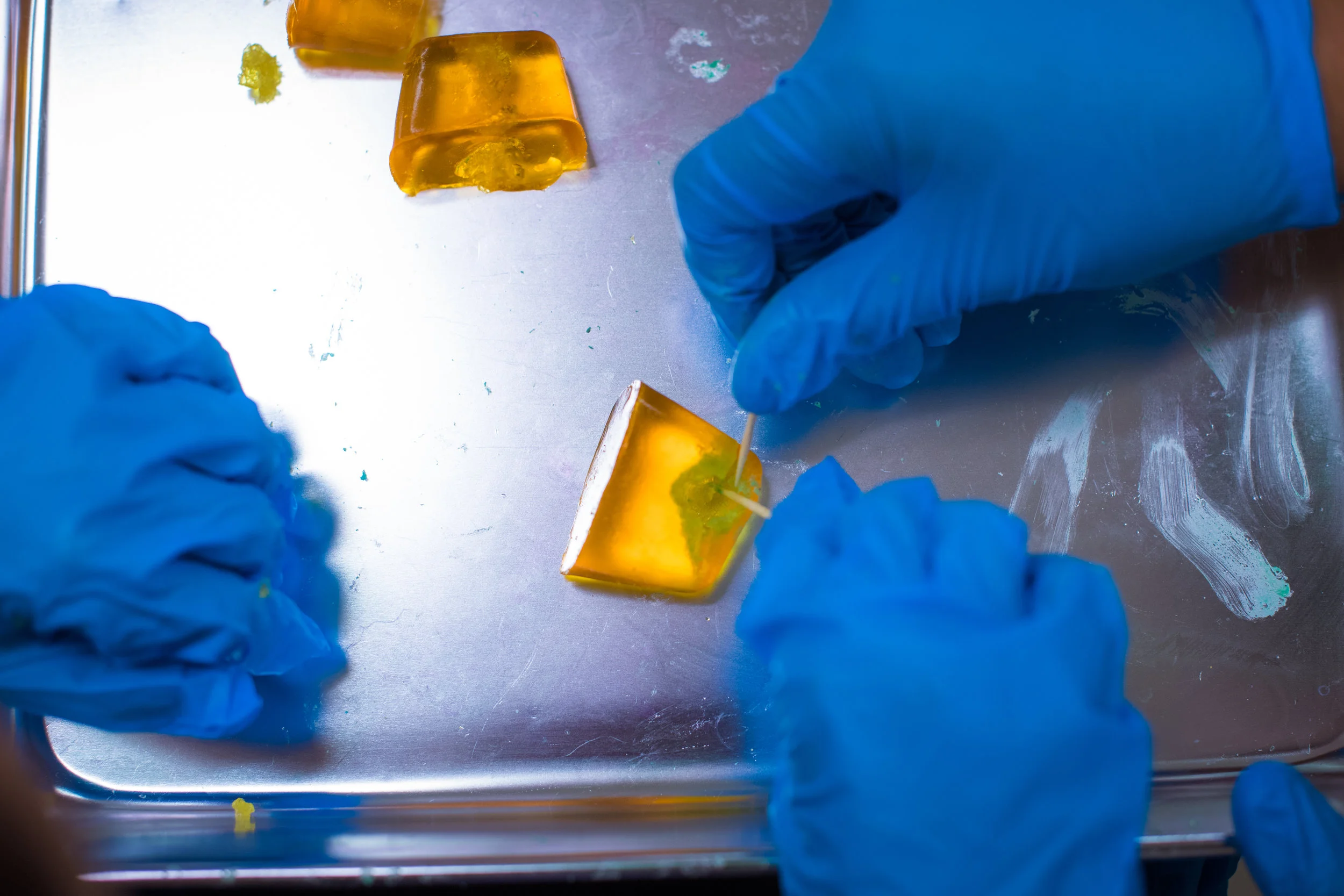
Systems Working Together: Biopsy Simulation
The first incision of a biopsy

Systems Working Together
Students conduct a model biopsy and lumpectomy
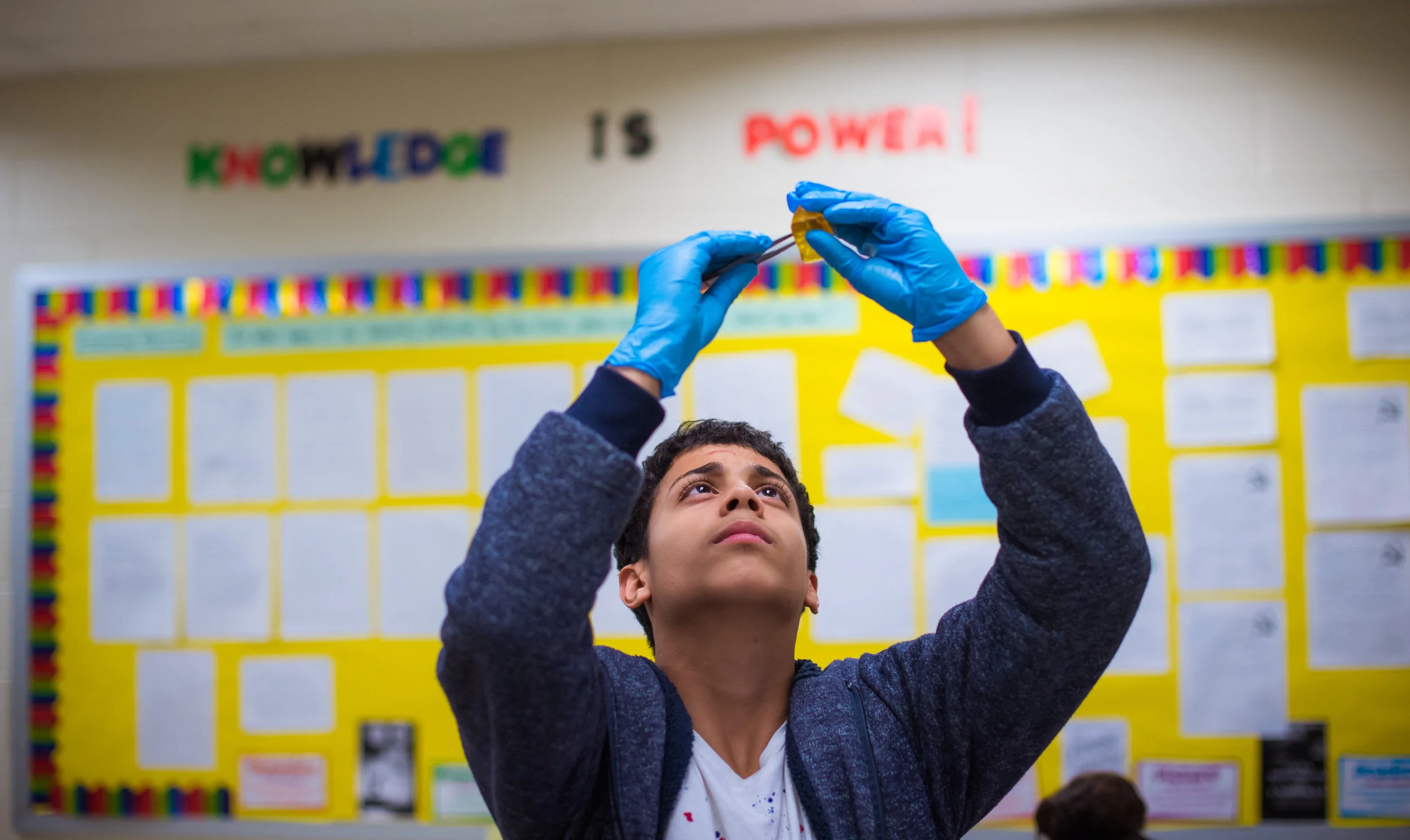
Systems Working Together
A student uses tweezers to perform a biopsy simulation.
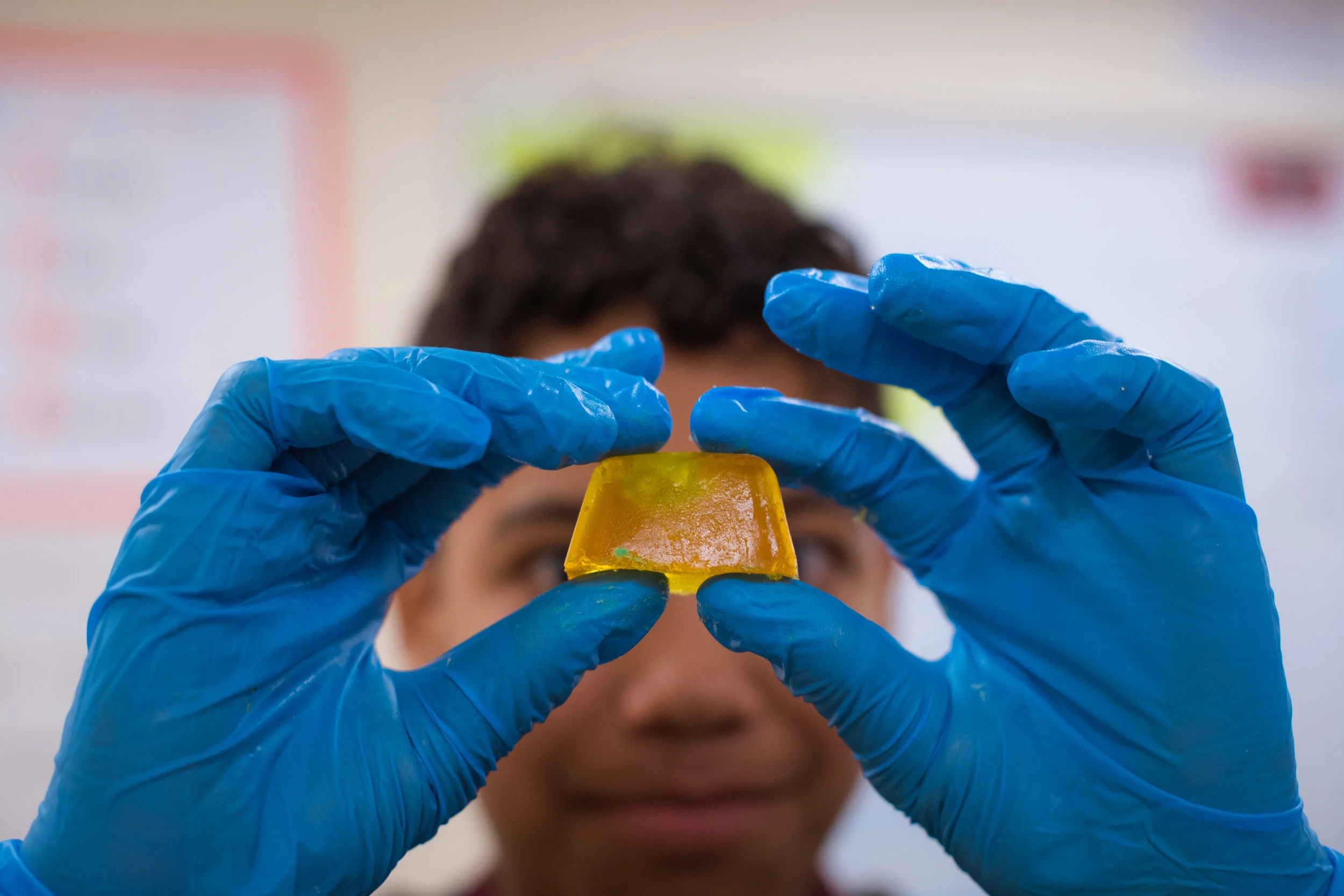
Systems Working Together
Student prepares to remove a piece of the play doh from the gelatin cube to simulate a biopsy
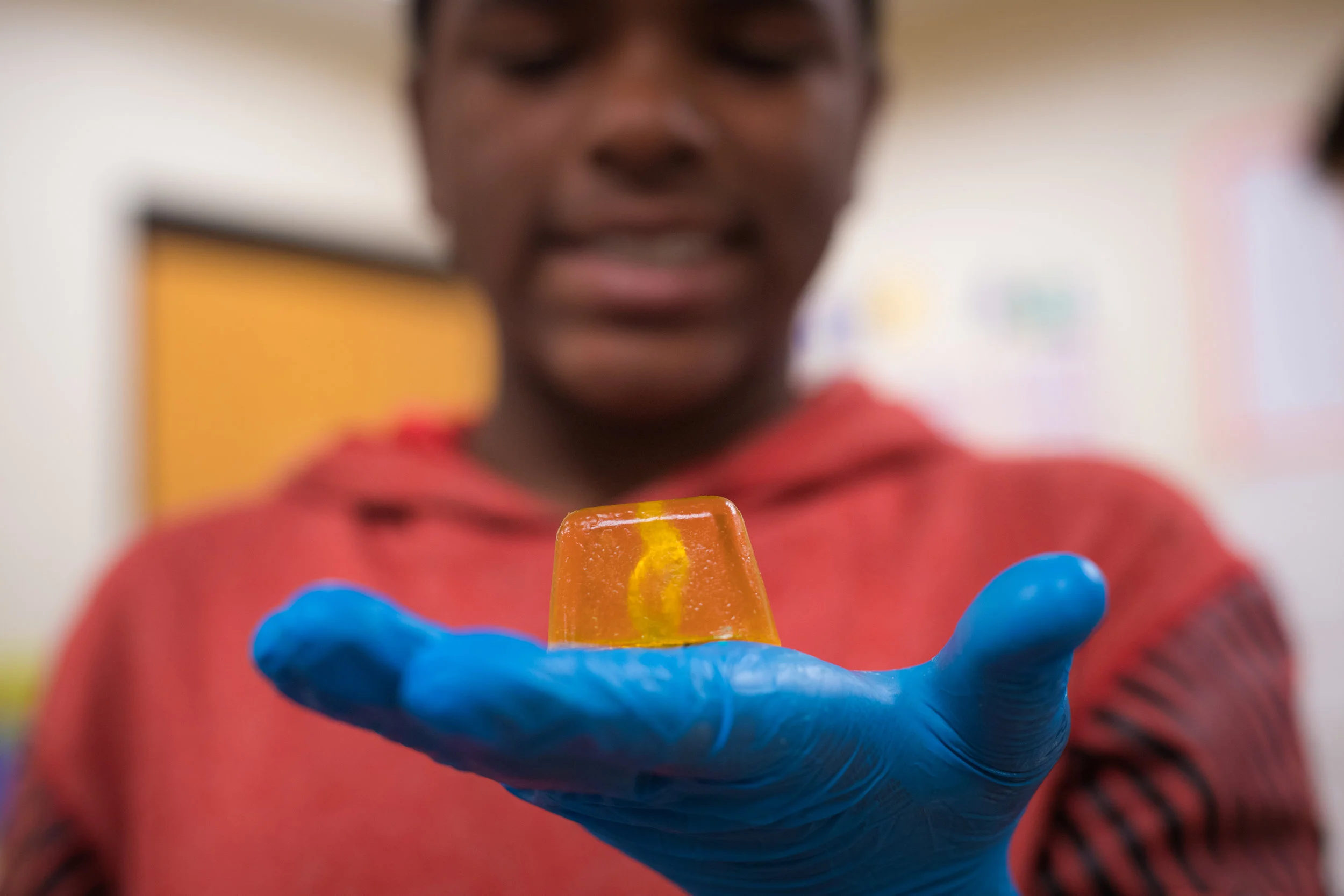
Systems Working Together
Student prepares to perform a lumpectomy

Systems Working Together
Students perform a biopsy




How to Suture
Student shows how to suture

Model Neurons
A completed model neuron

Brain Hats
Students create brain hats that show the different parts of the brain
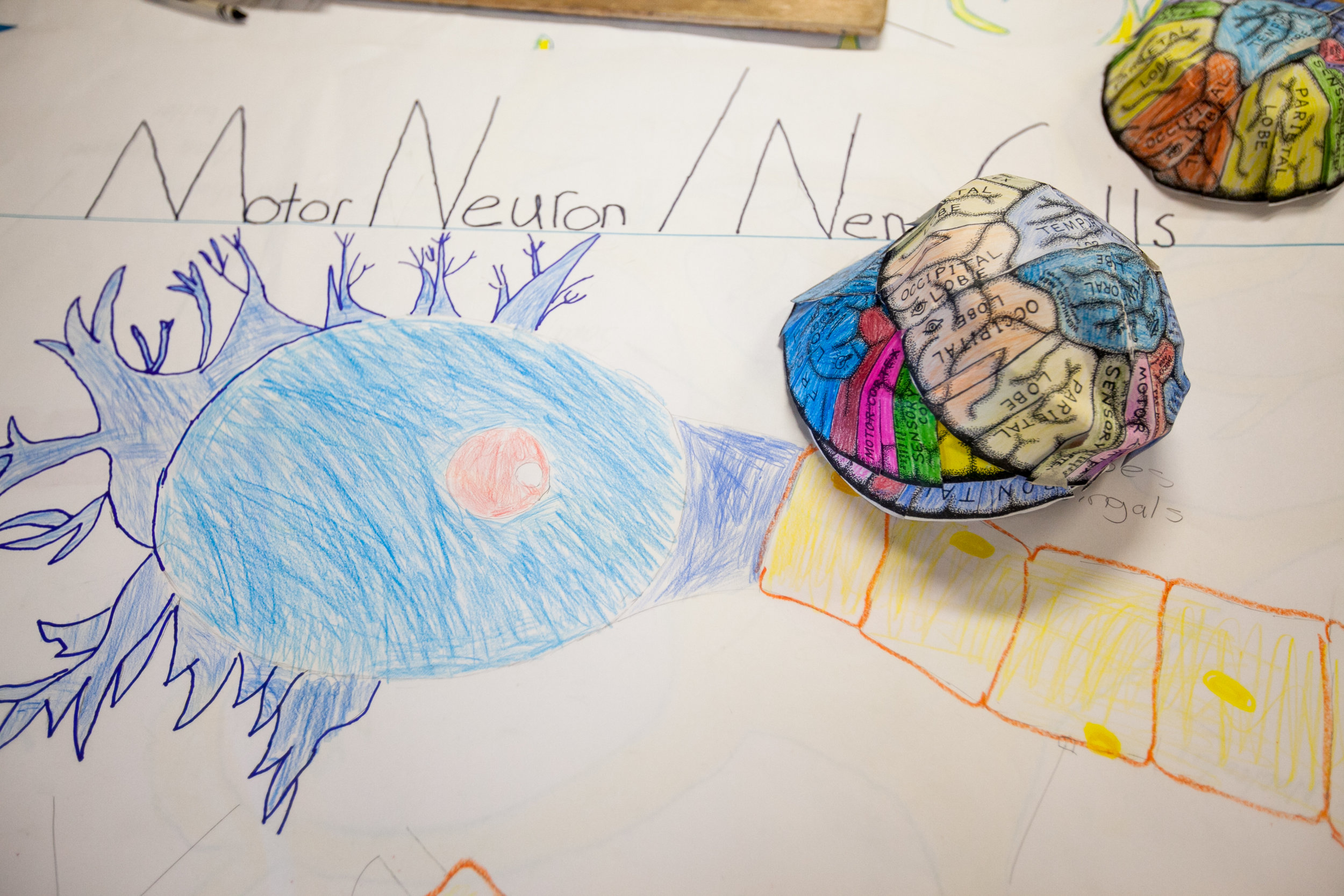
Brain Hats
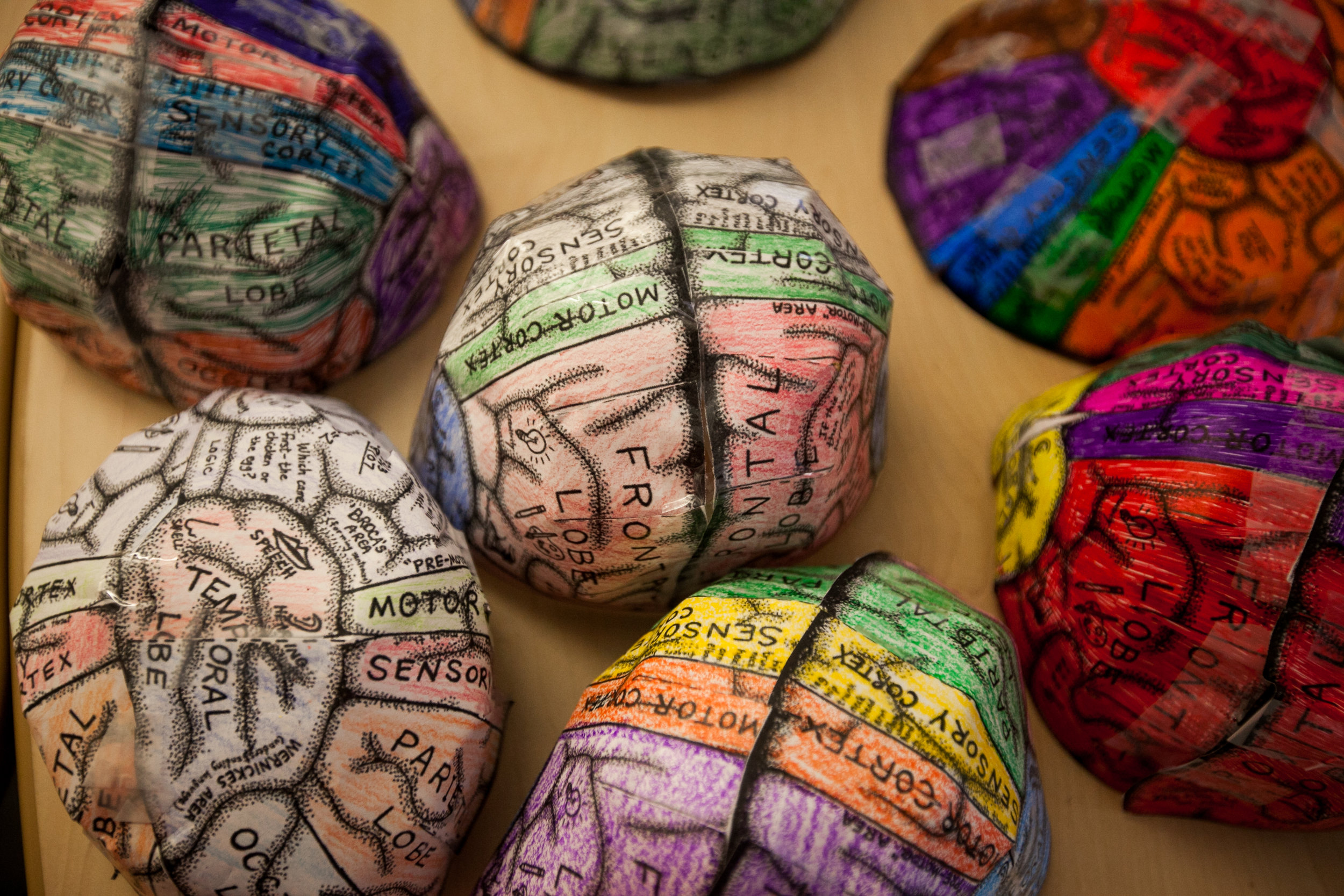
Brain Hats
Completed brain hats with the different structures colored in

Brain Hats
Student wears their completed brain hat
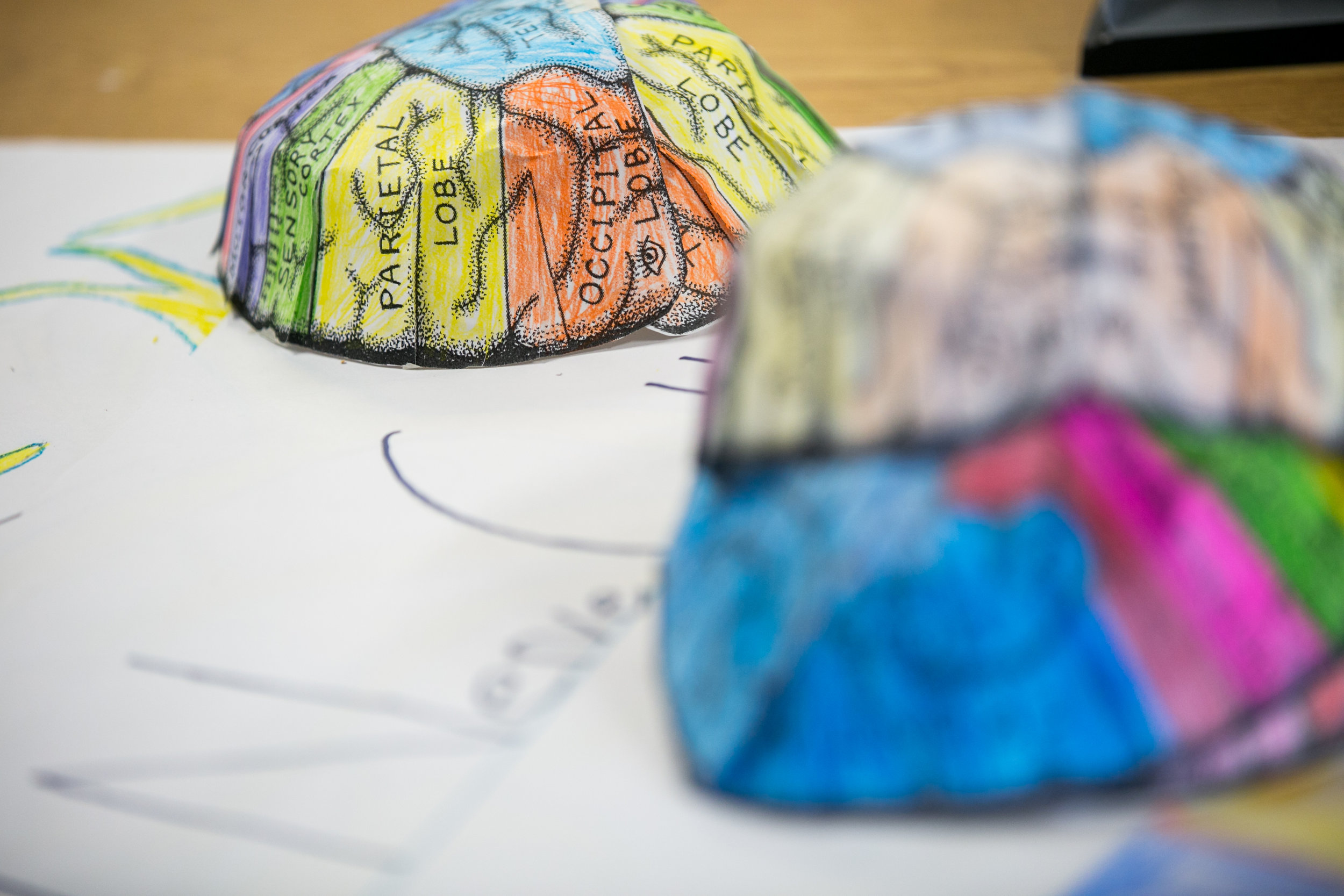
Brain Hats

Brain Hats
Students wear their completed brain hats during other activites
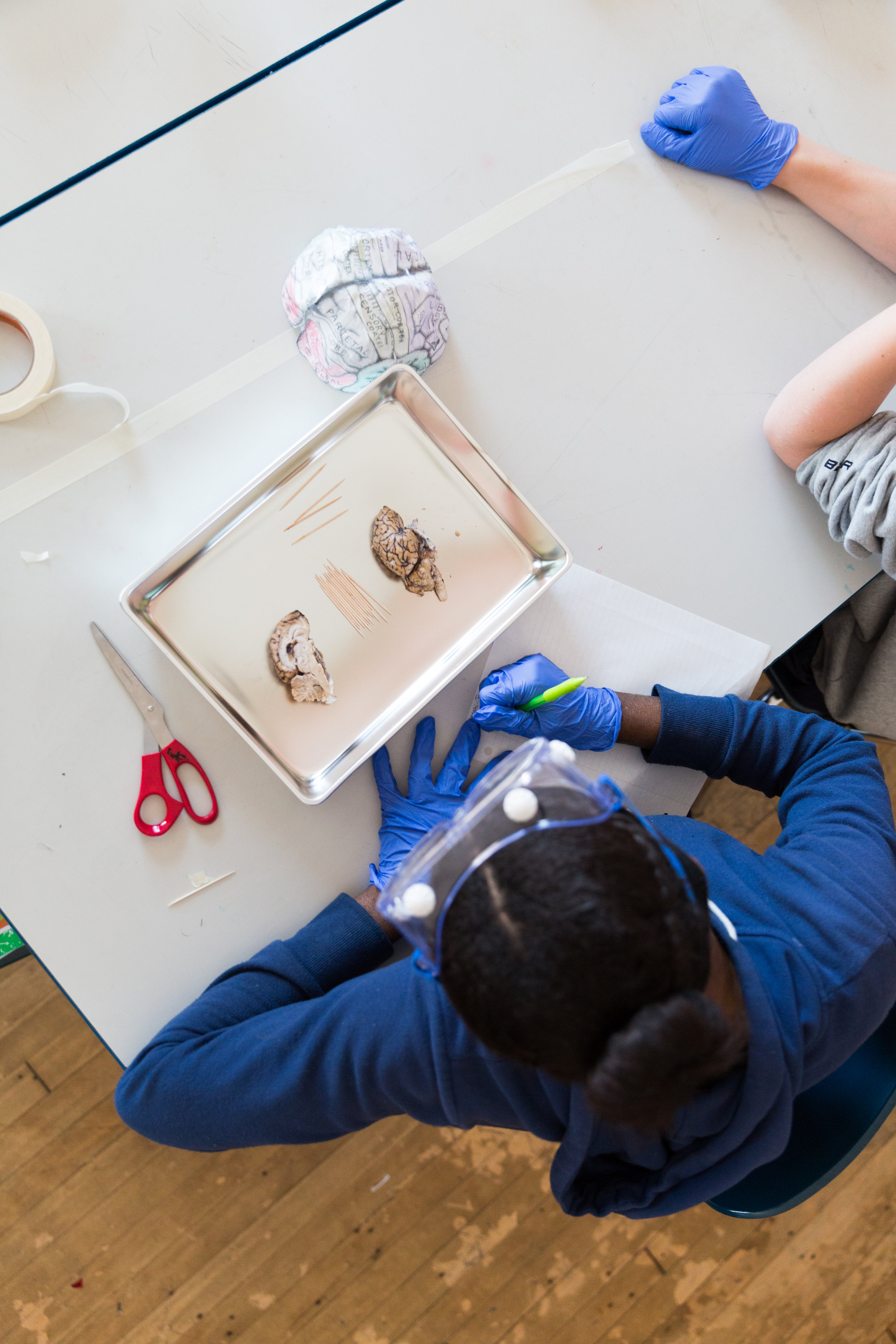
Sheep Brain Dissection
Students review the parts of the brain in preparation for dissection

Tools for the Sheep Brain Dissection
Students dissect a sheep brain to observe the various lobes, grey and white matter, optic chasm and cerebellum among other anatomical structures. Students practice sagittal, axial and traverse cuts.

Sheep Brain Dissection
Teacher points out the different parts of the brain
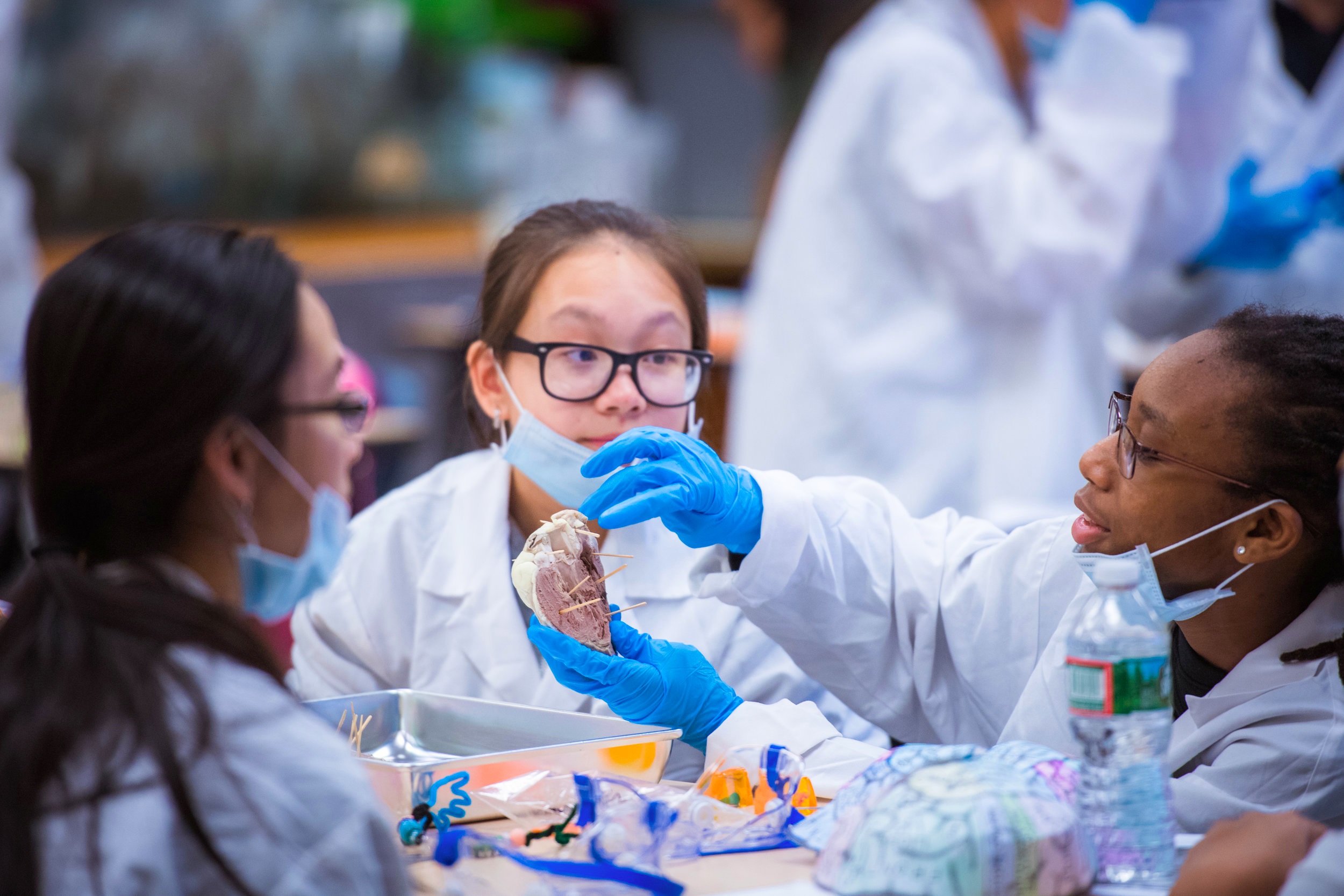
Sheep Brain Dissection
Students identify the different parts of the brain
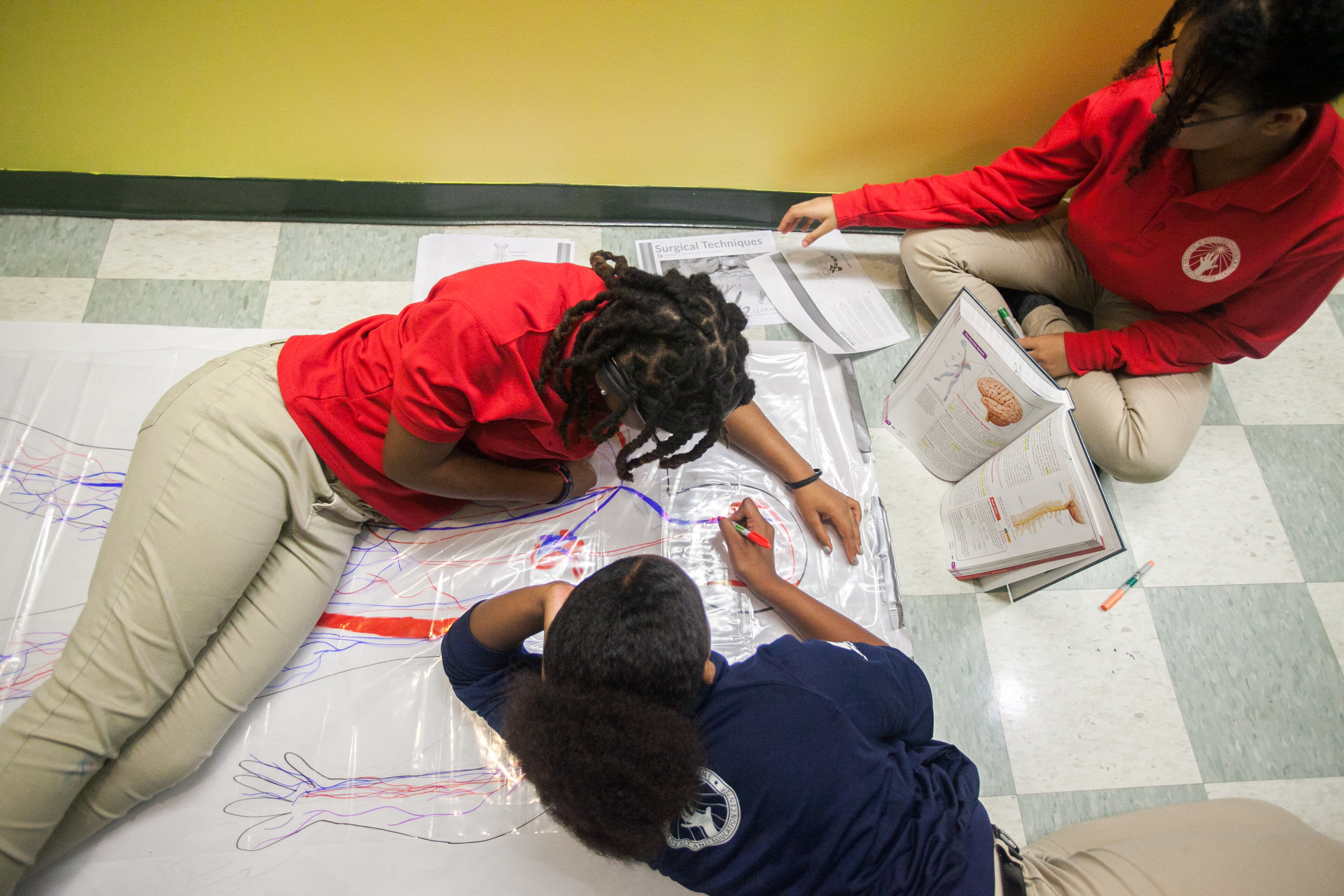
Model Patient
Students draw the different systems on their model patient

Model Patient
Students use shower curtains to draw the different systems of the body
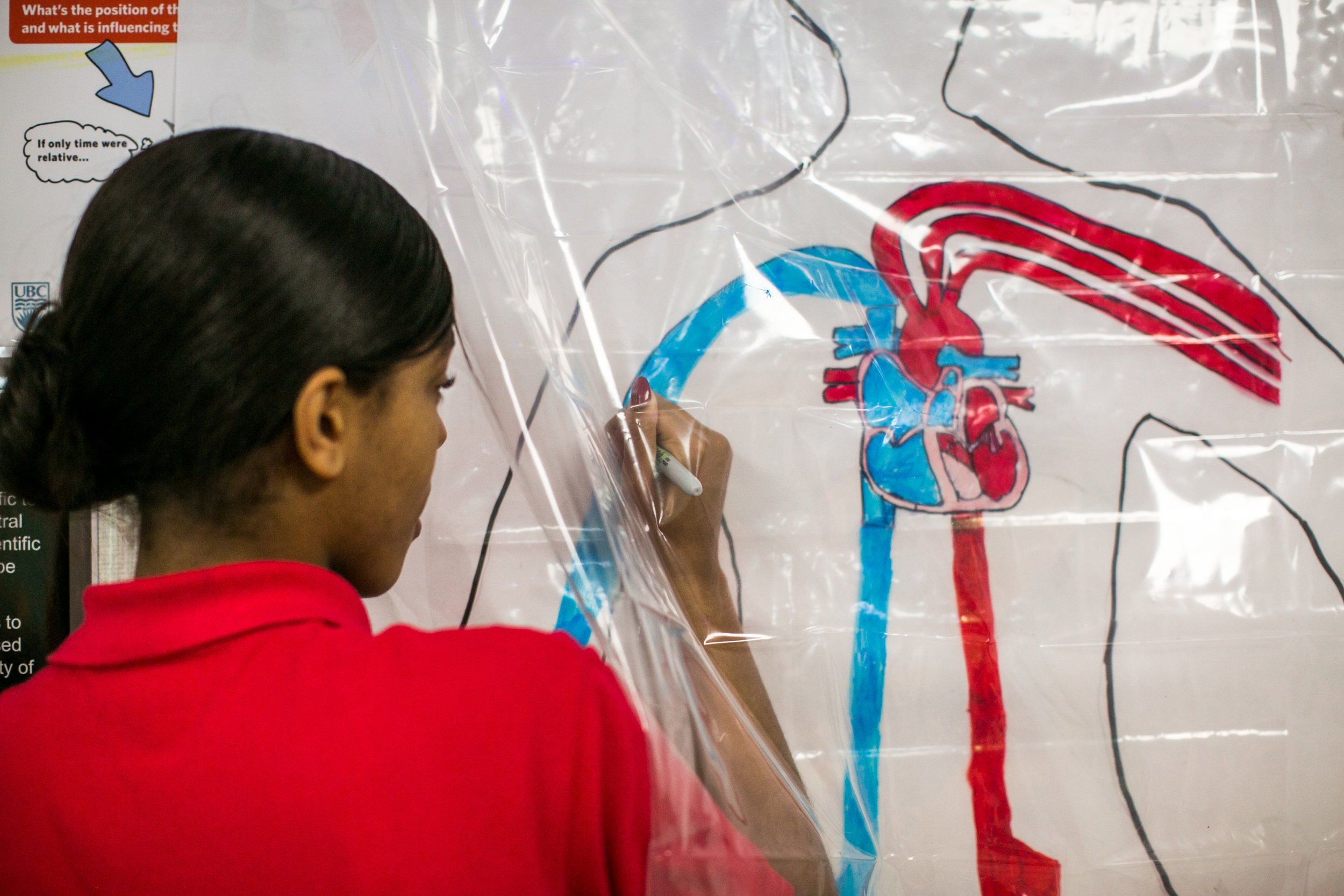
Model Patient
Student draws the systems of the model patient

Model Patient
Students are presented with a hypothetical patient who has endured a traumatic accident and are called to diagnose and treat their patient based on the knowledge and experience they have obtained.
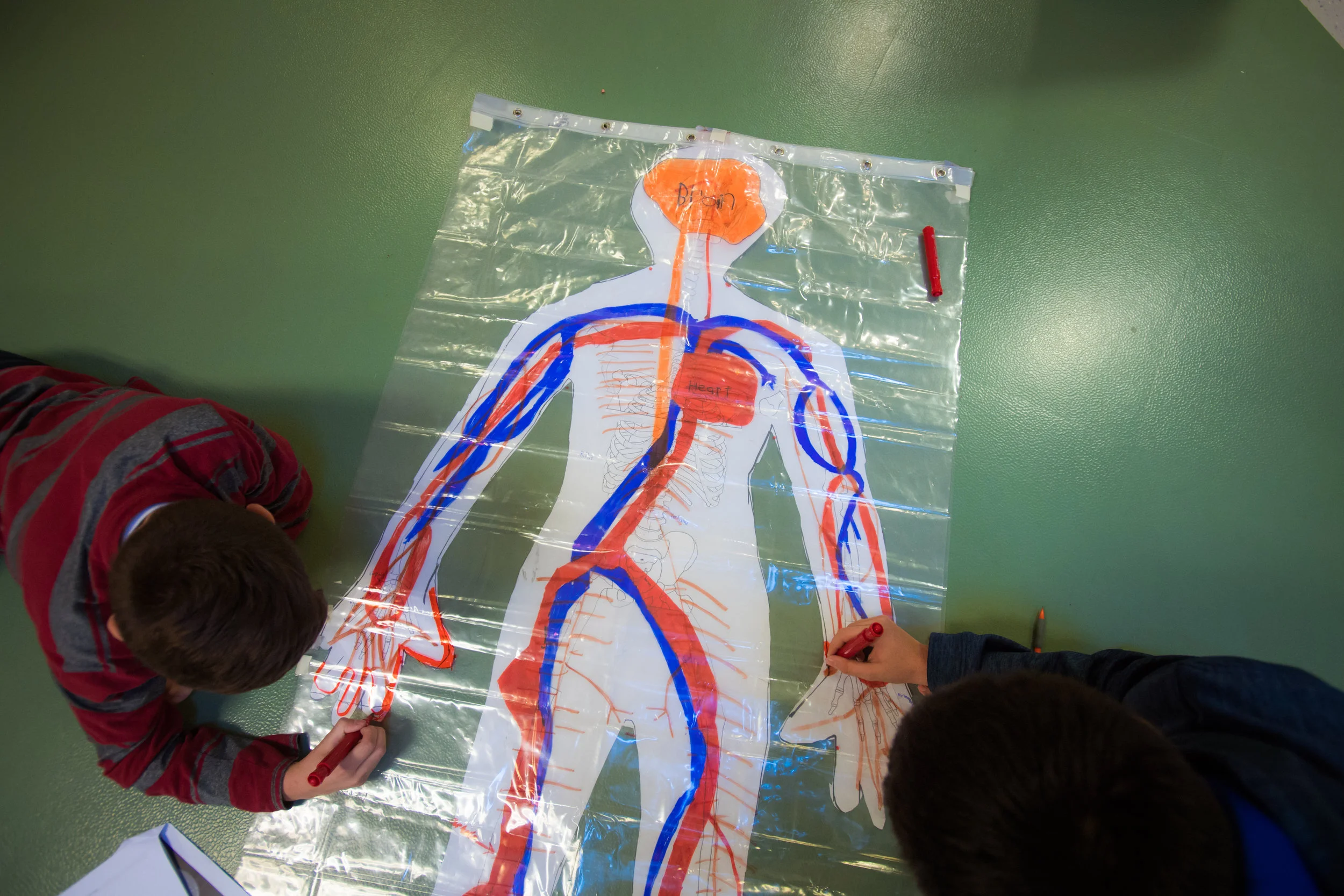
Model Patient
Students create a diagram using shower curtains to show how the body systems are related
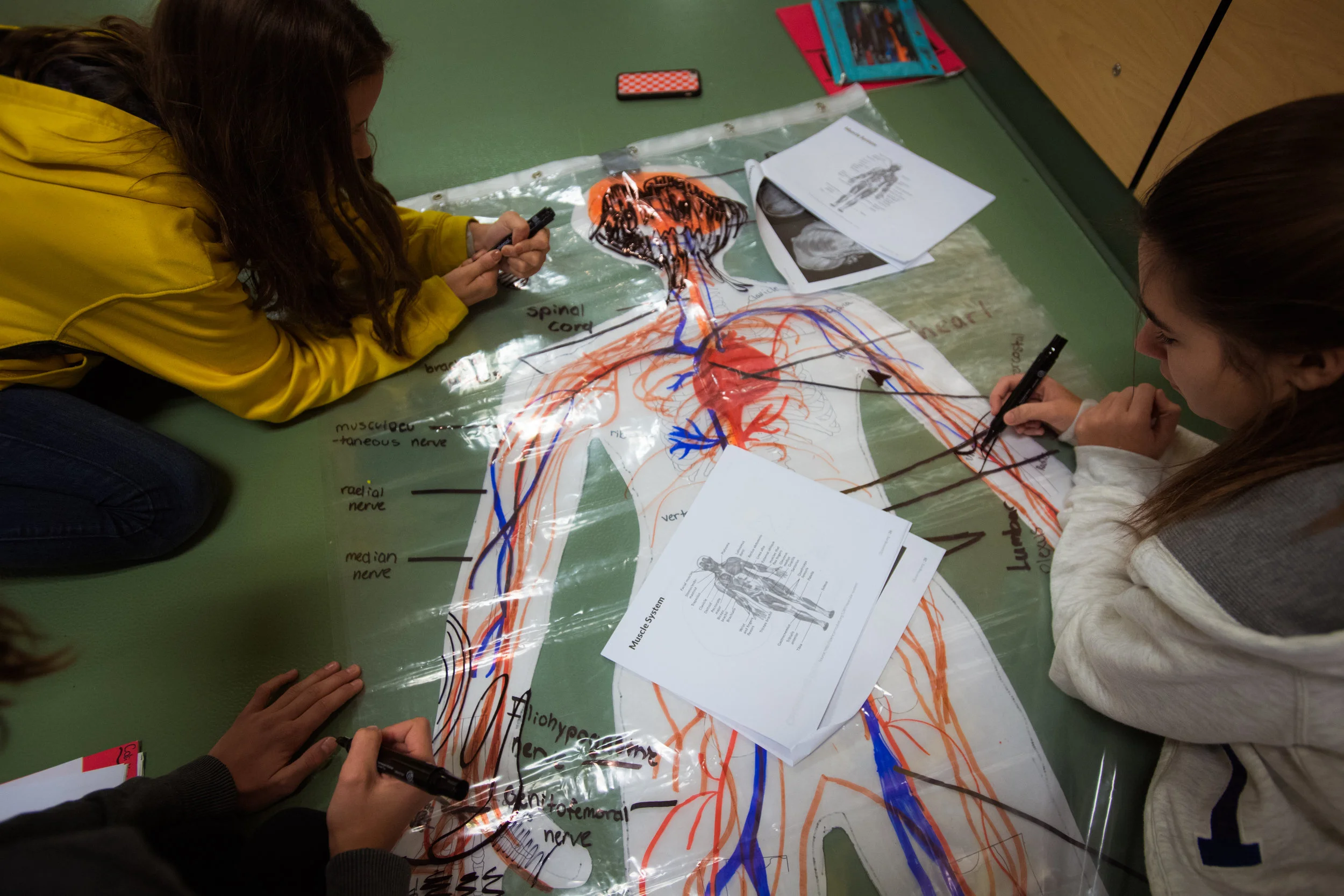
Model Patient
Students draw the systems on their model patient

Model Patient
Completed model patient
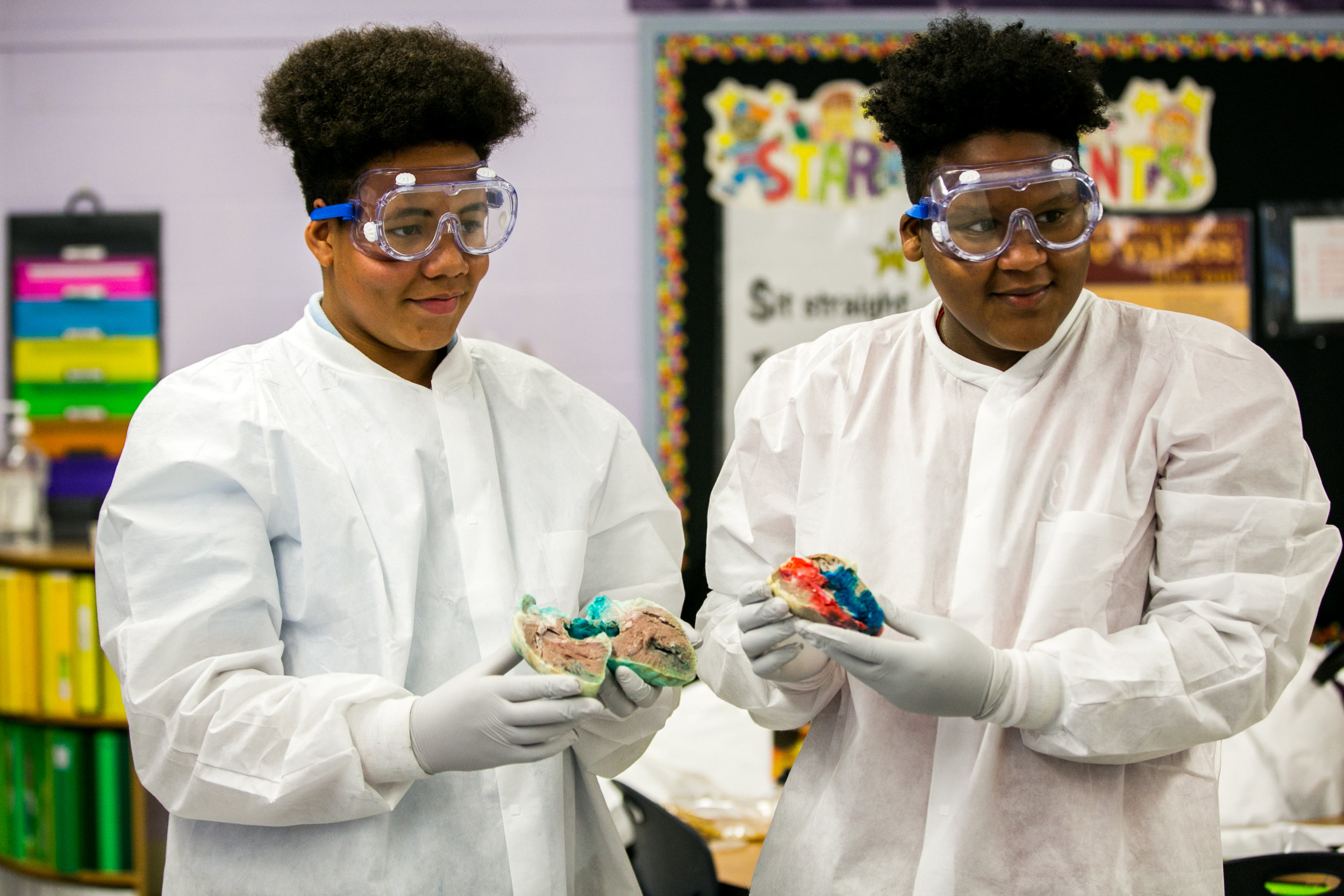
Showcase
Students show and explain the different parts of their dissected heart for the Showcase visitors.

Showcase
Students use dye to show how the heart works.
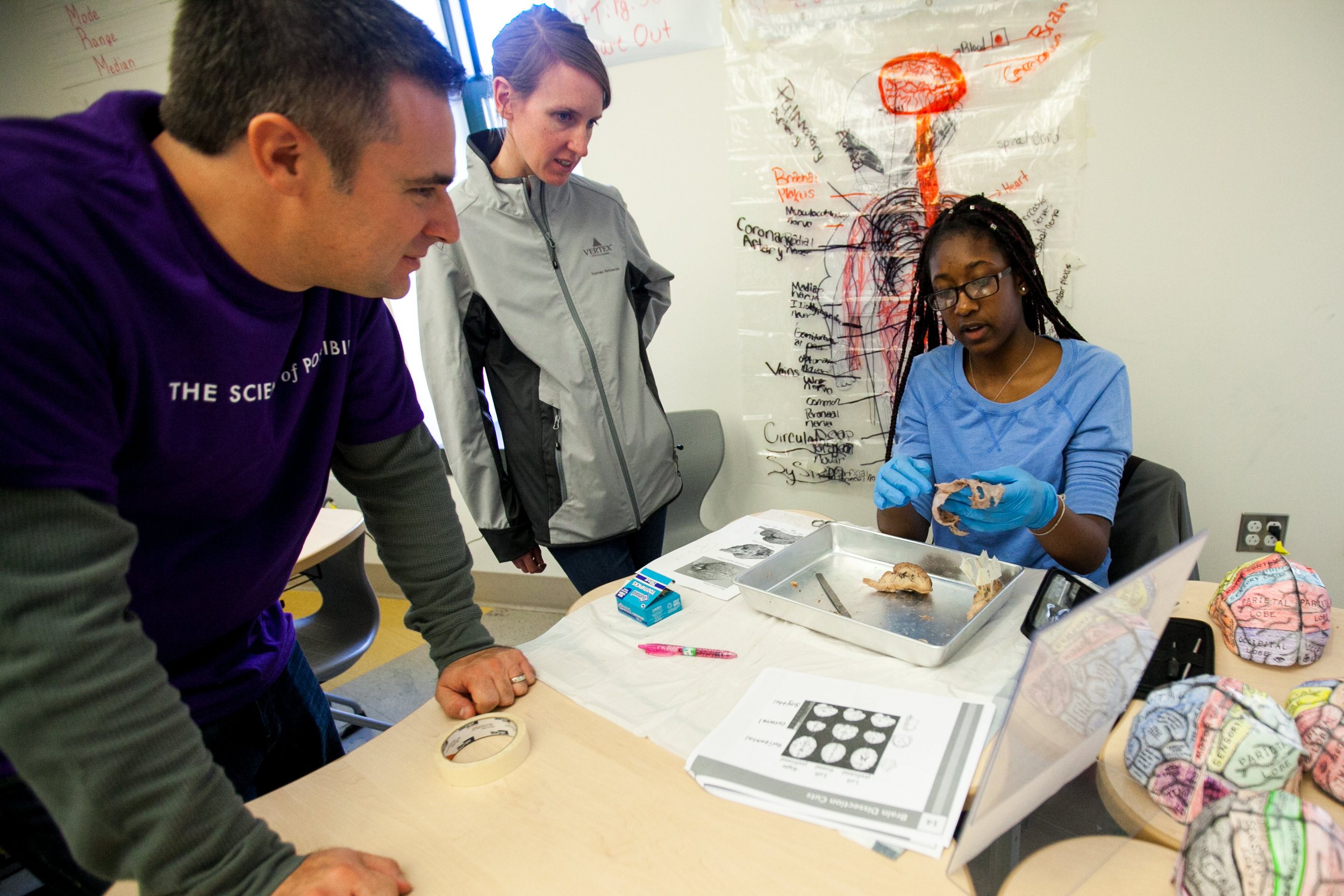
Showcase
Student shows guests the different parts of the brain
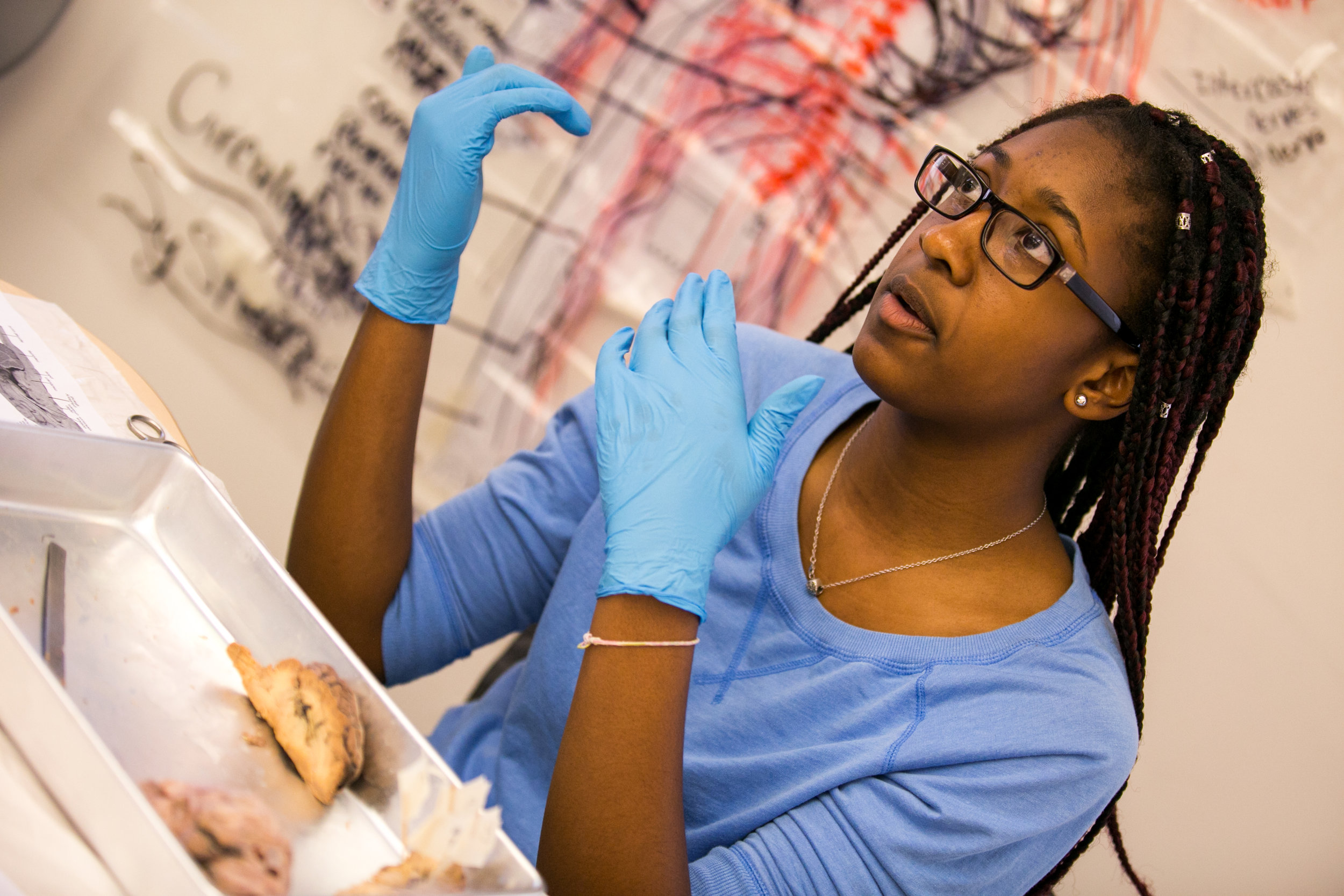
Showcase
Student talks about the brain dissection during showcase
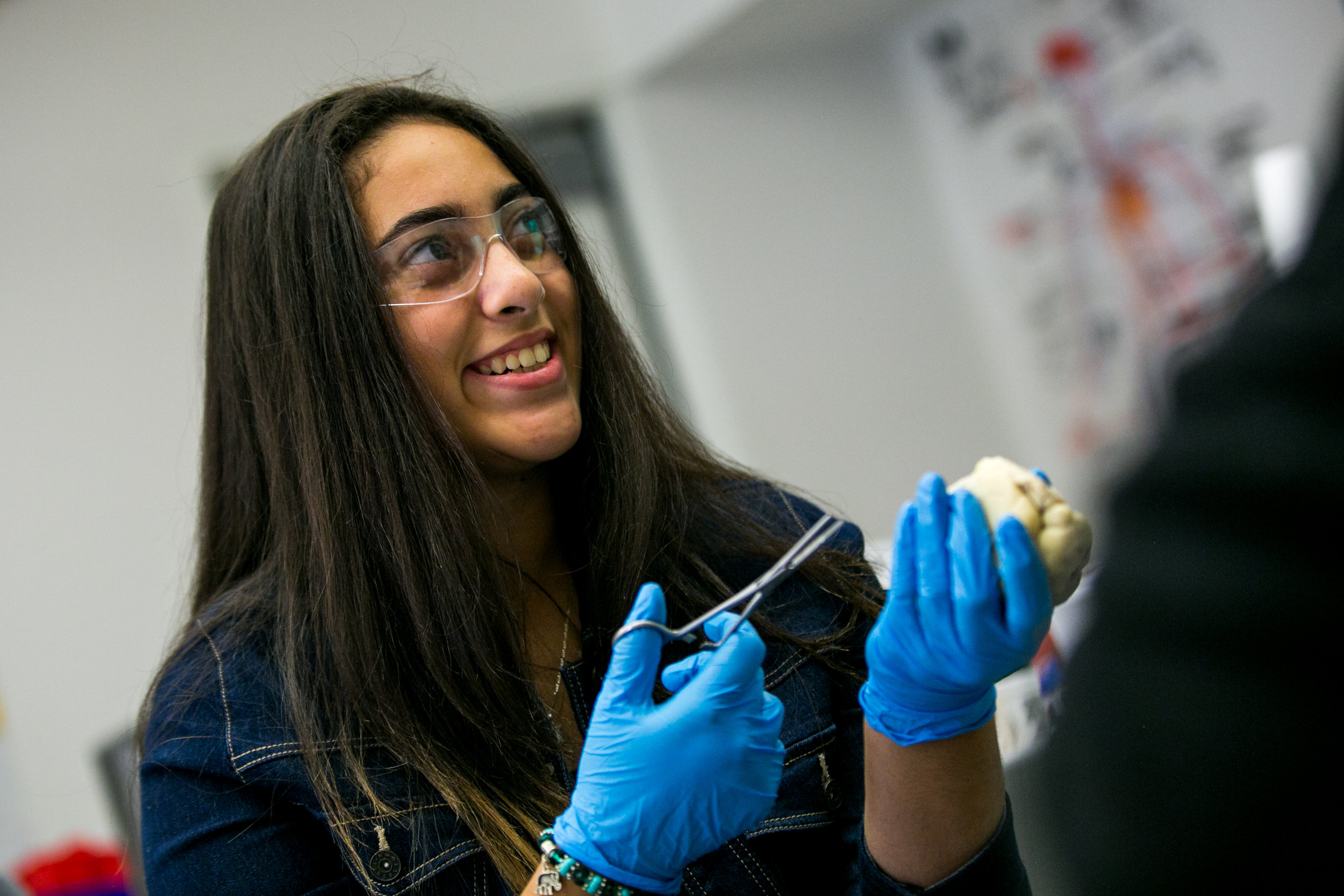
Showcase
Student shows the sheep heart to a visitor during showcase
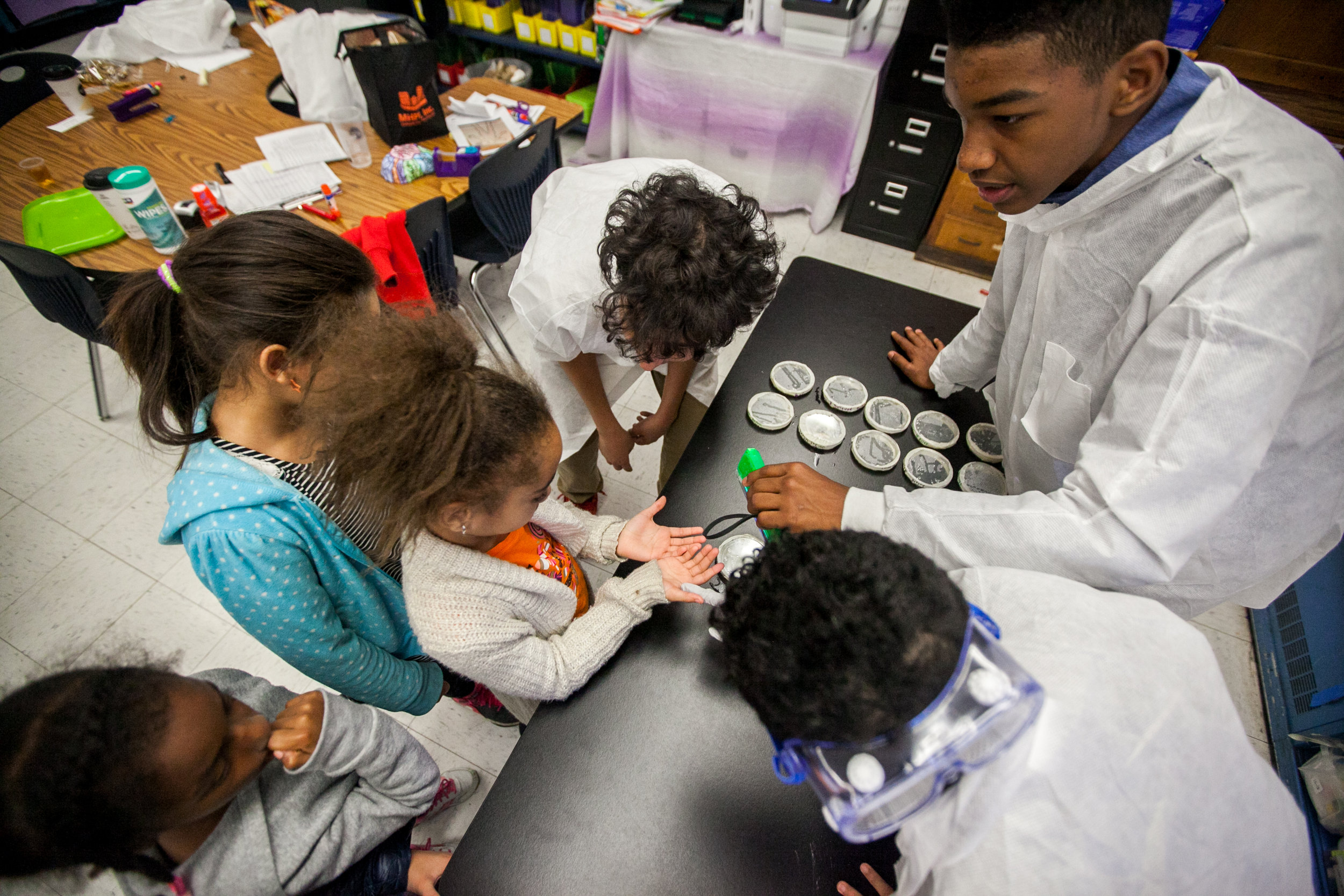
Showcase
Student shows the younger students what they’ve learned this week
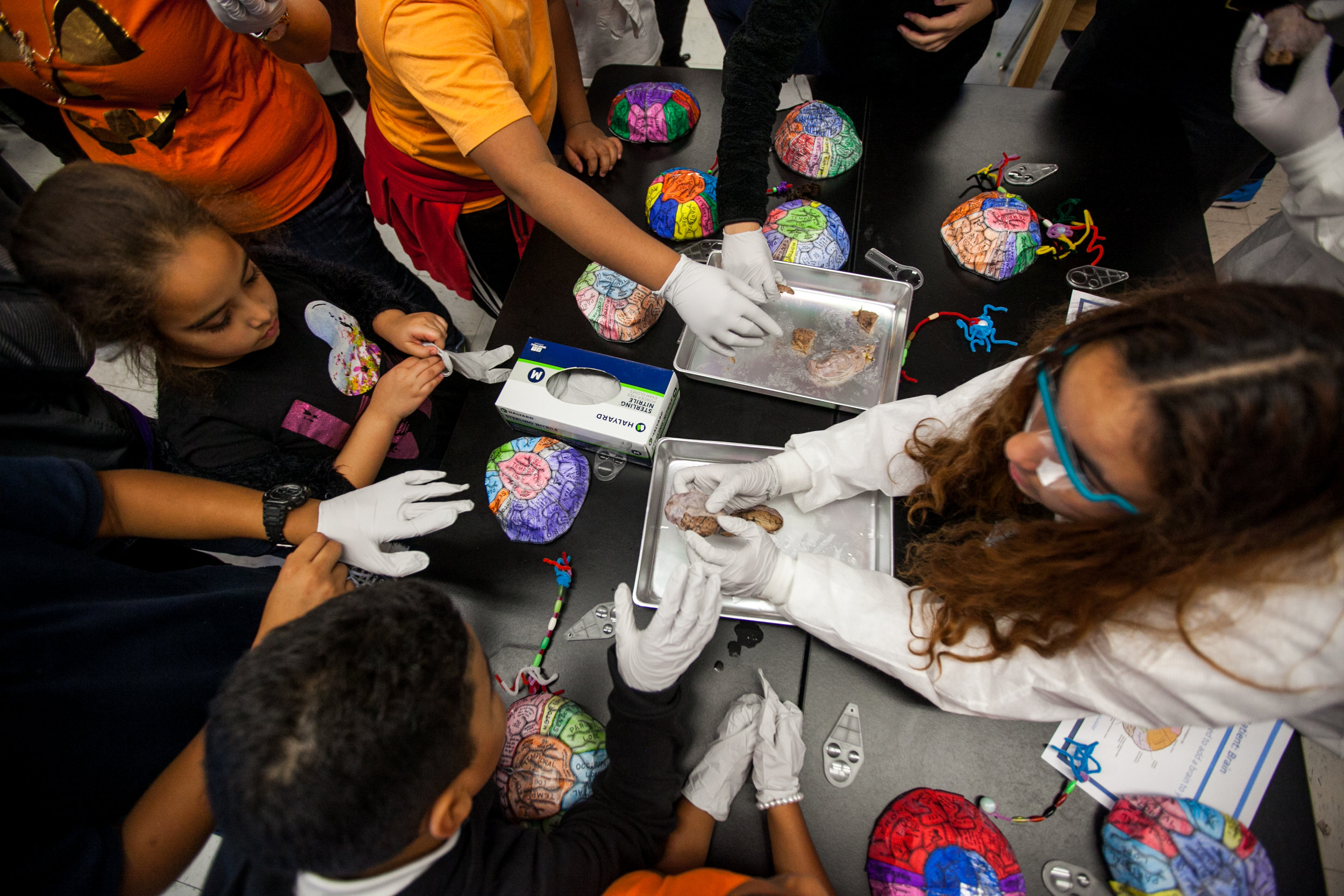
Showcase
Student shows guests the different parts of the brain using the brain hats and the sheep brain

Showcase
Student shows guest the brain hats and the dissected sheep brain during the showcase
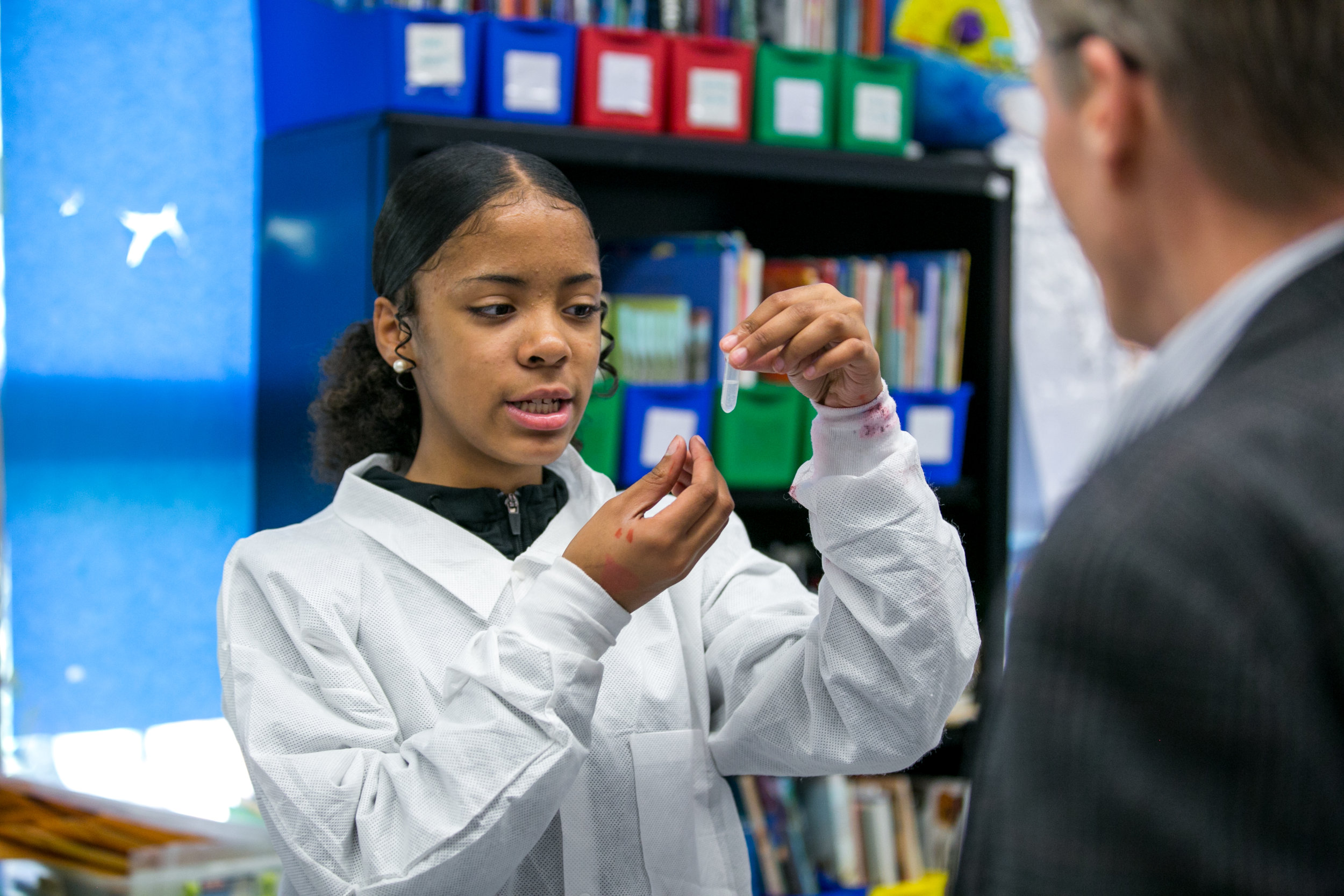
Showcase
Student shows her DNA to visitor during the showcase
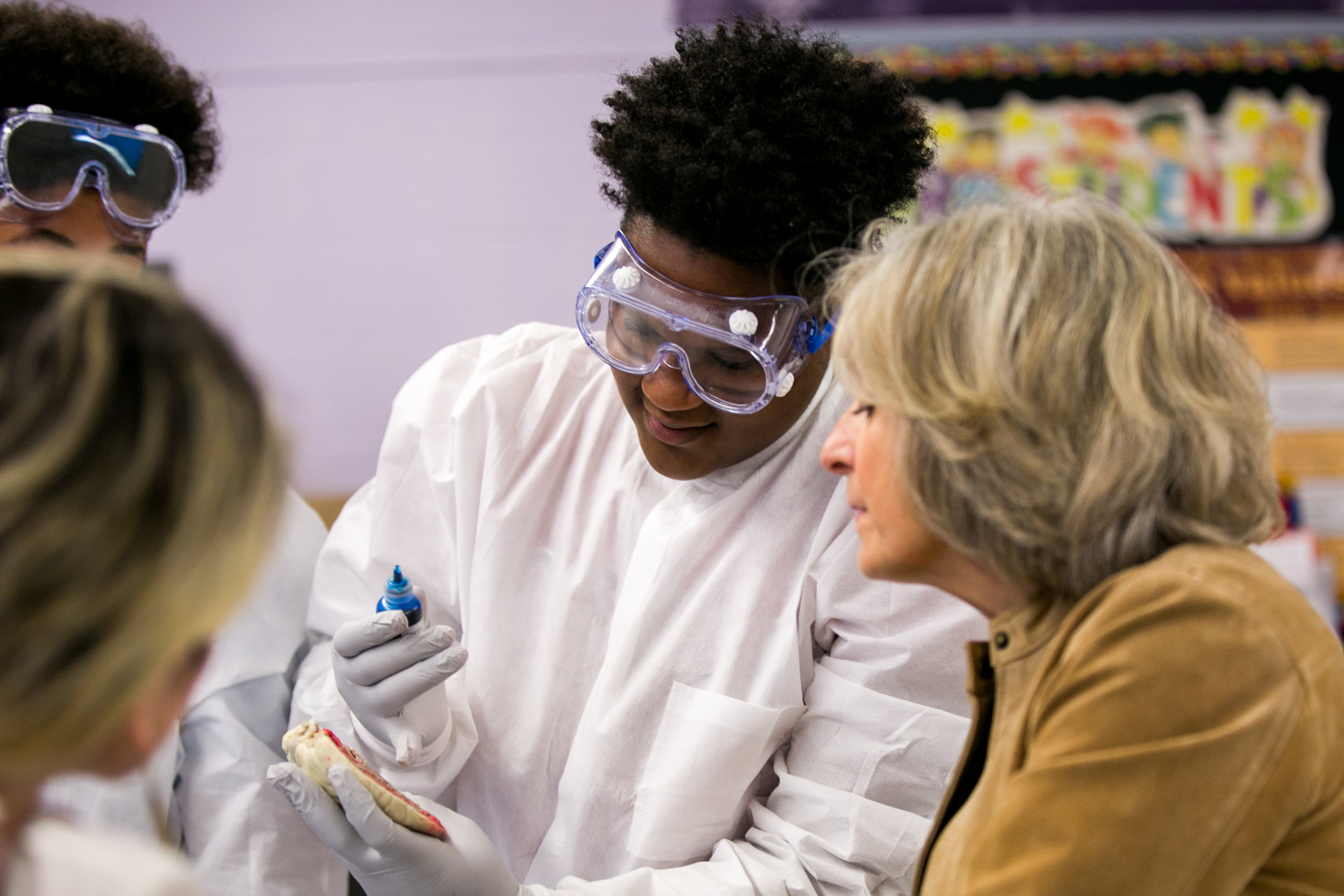
Showcase
Student shows visitor how dyes are used to show the different parts of the heart
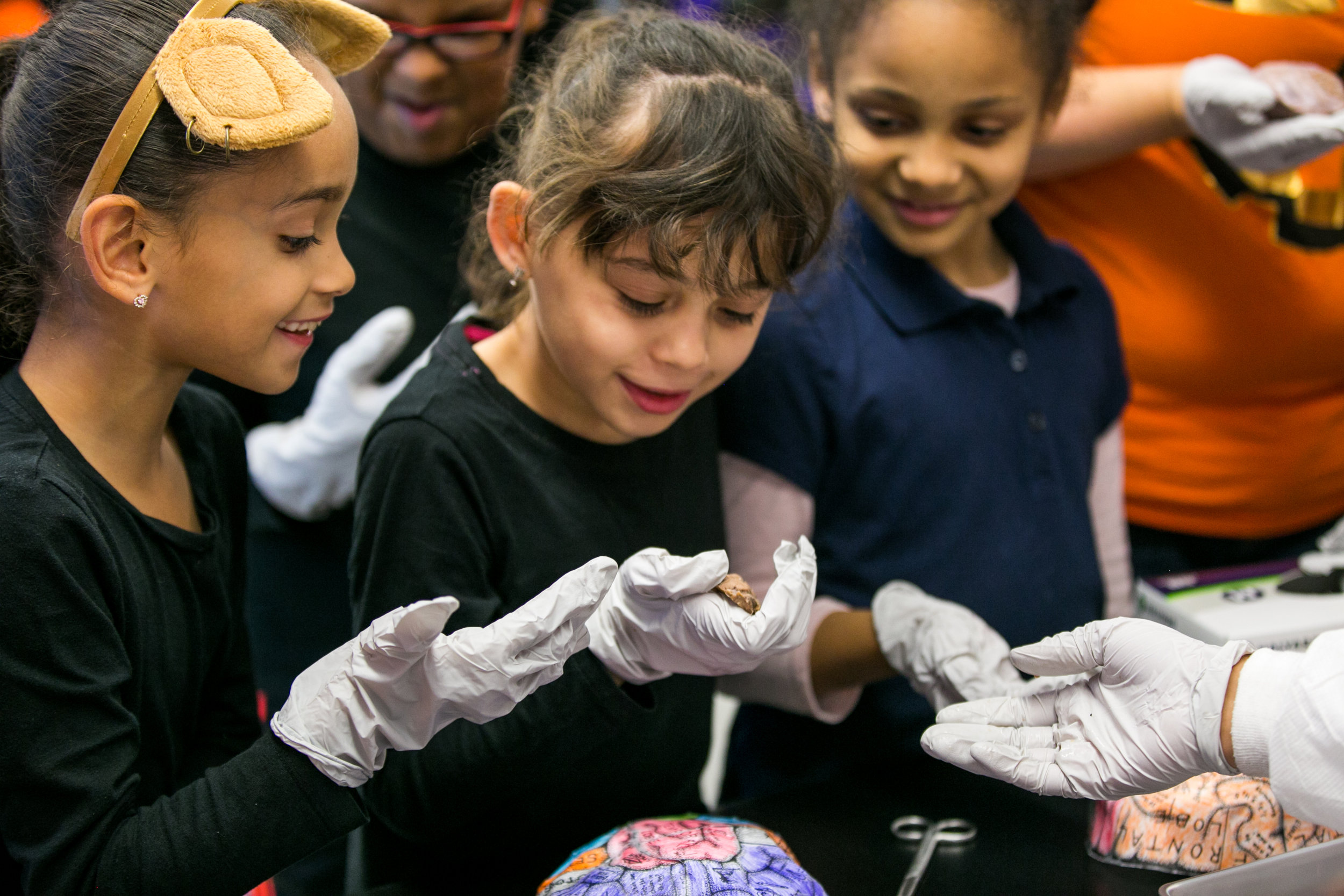
Showcase
Showing the sheep brain that was dissected to younger students during the showcase

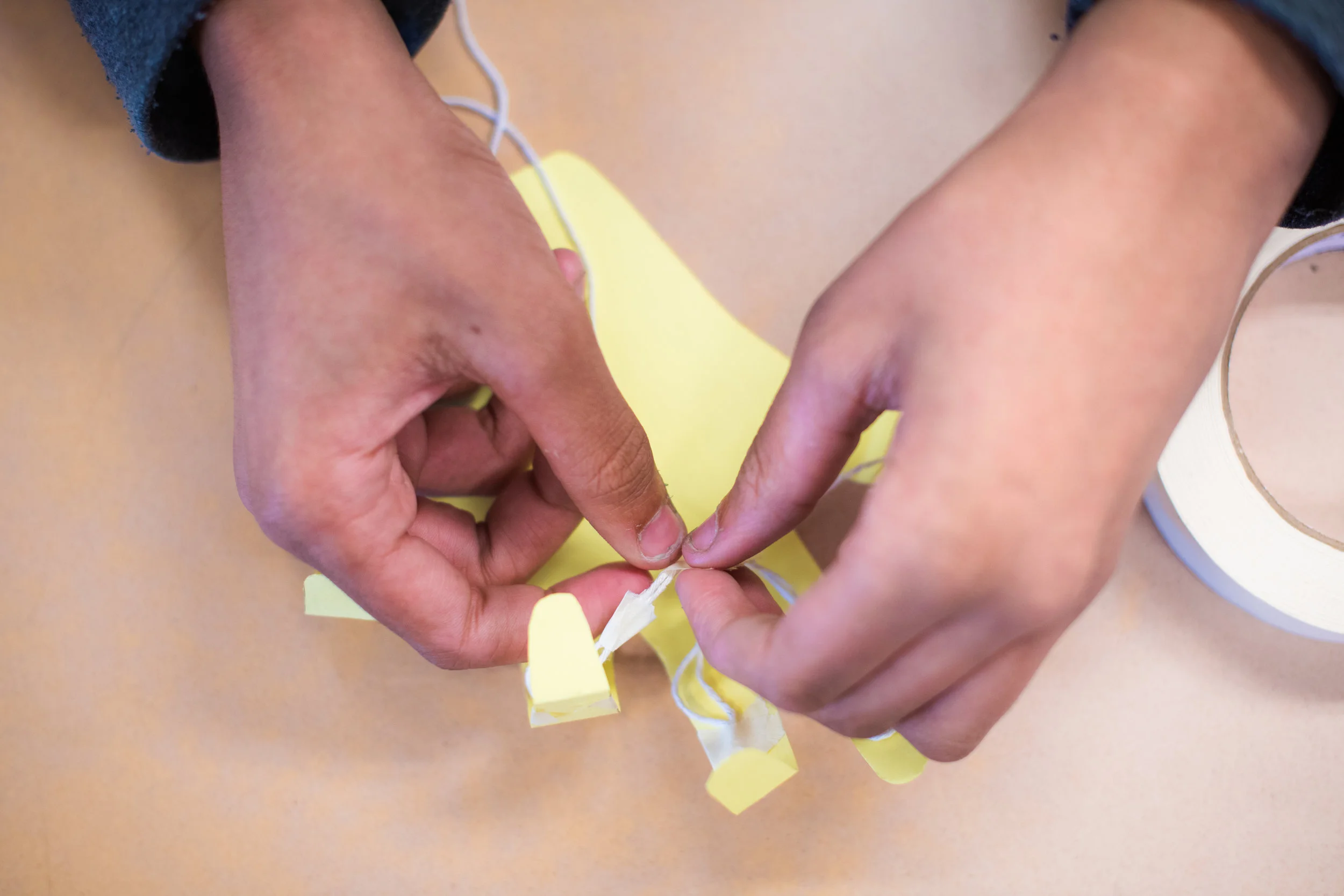
Creating the Model Hand
Tightening the string to create the movements of the model hand
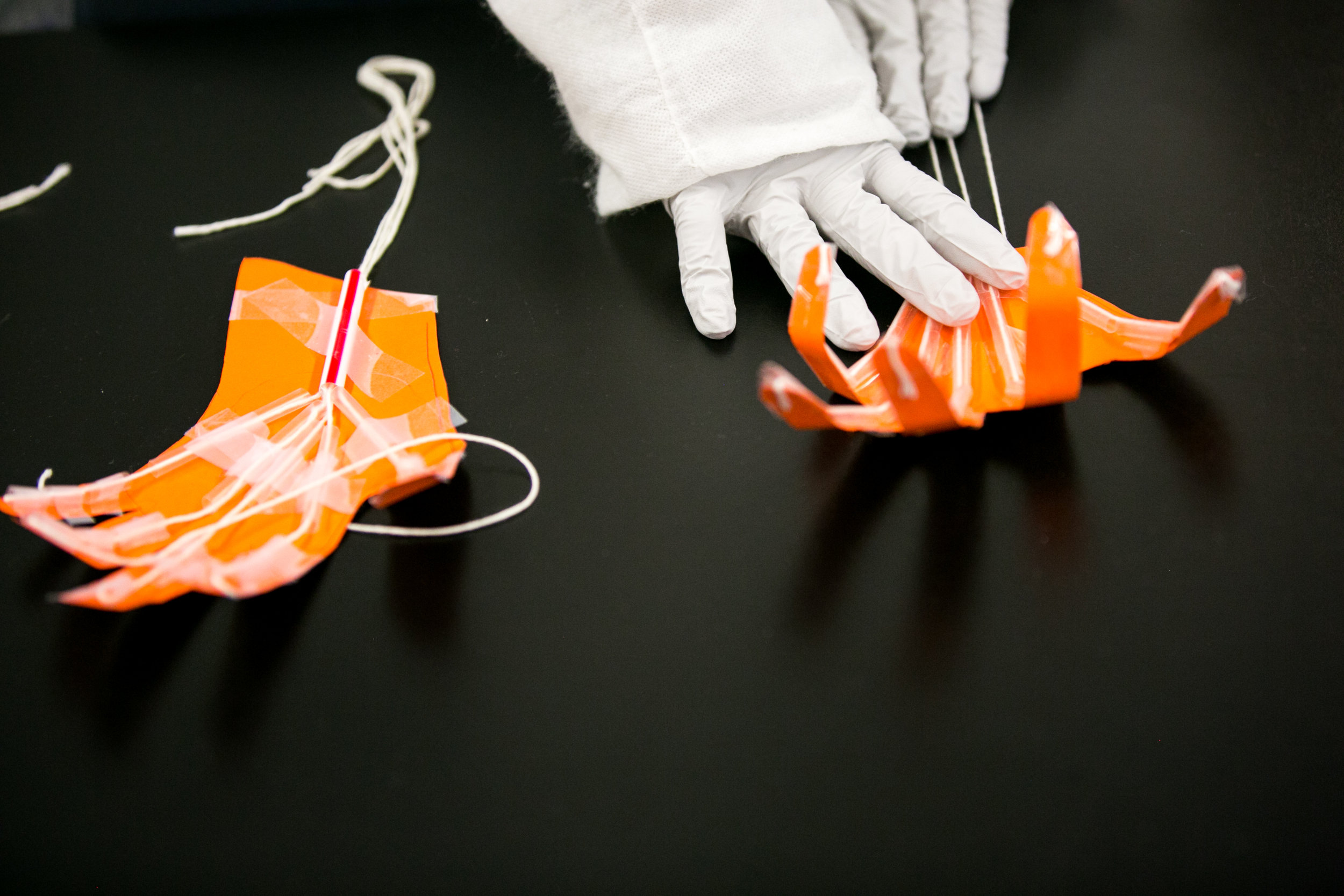
Testing the Model Hand
Testing the final model hand
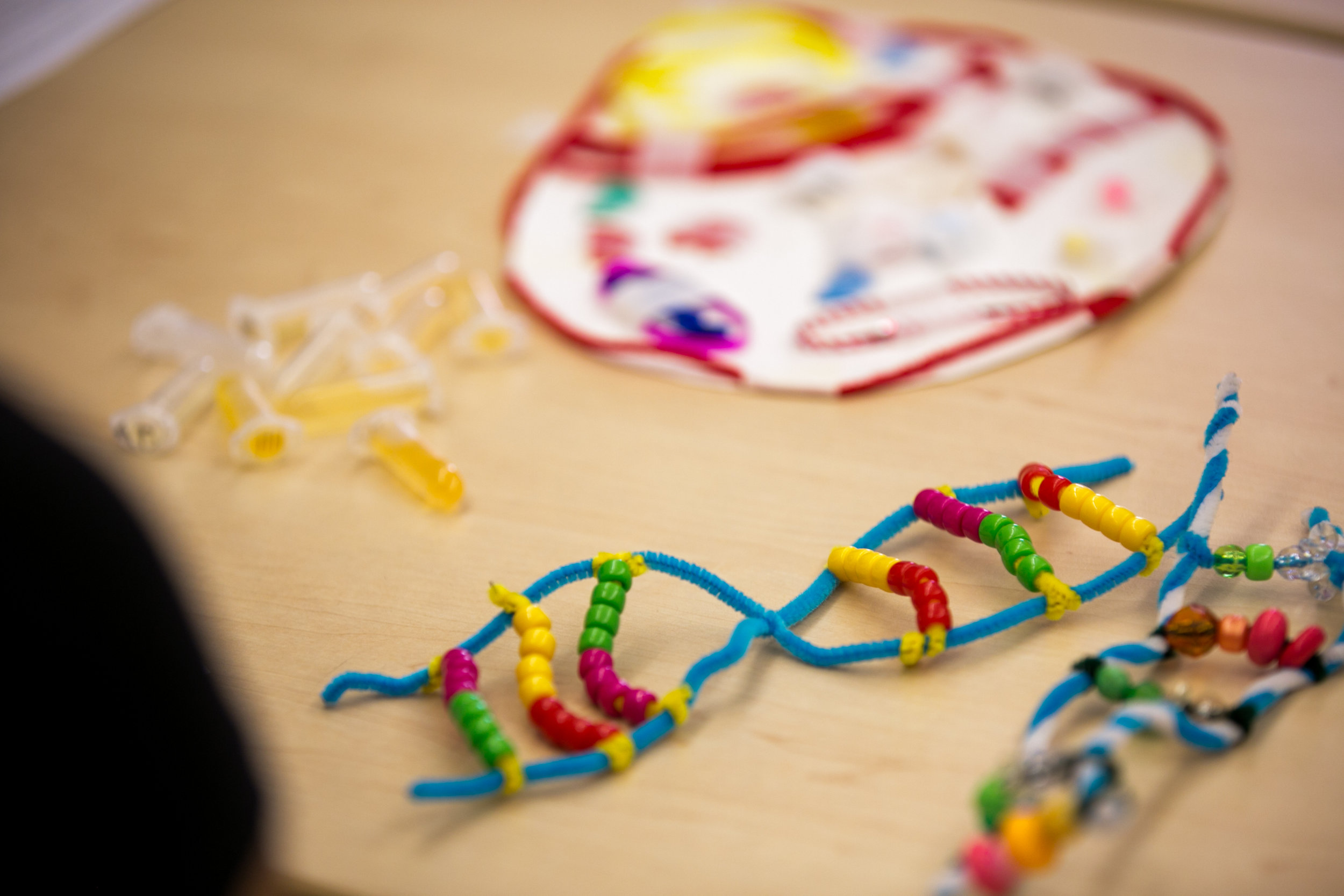
Completed DNA Model
A finished DNA model with different colored beads representing each phosphate
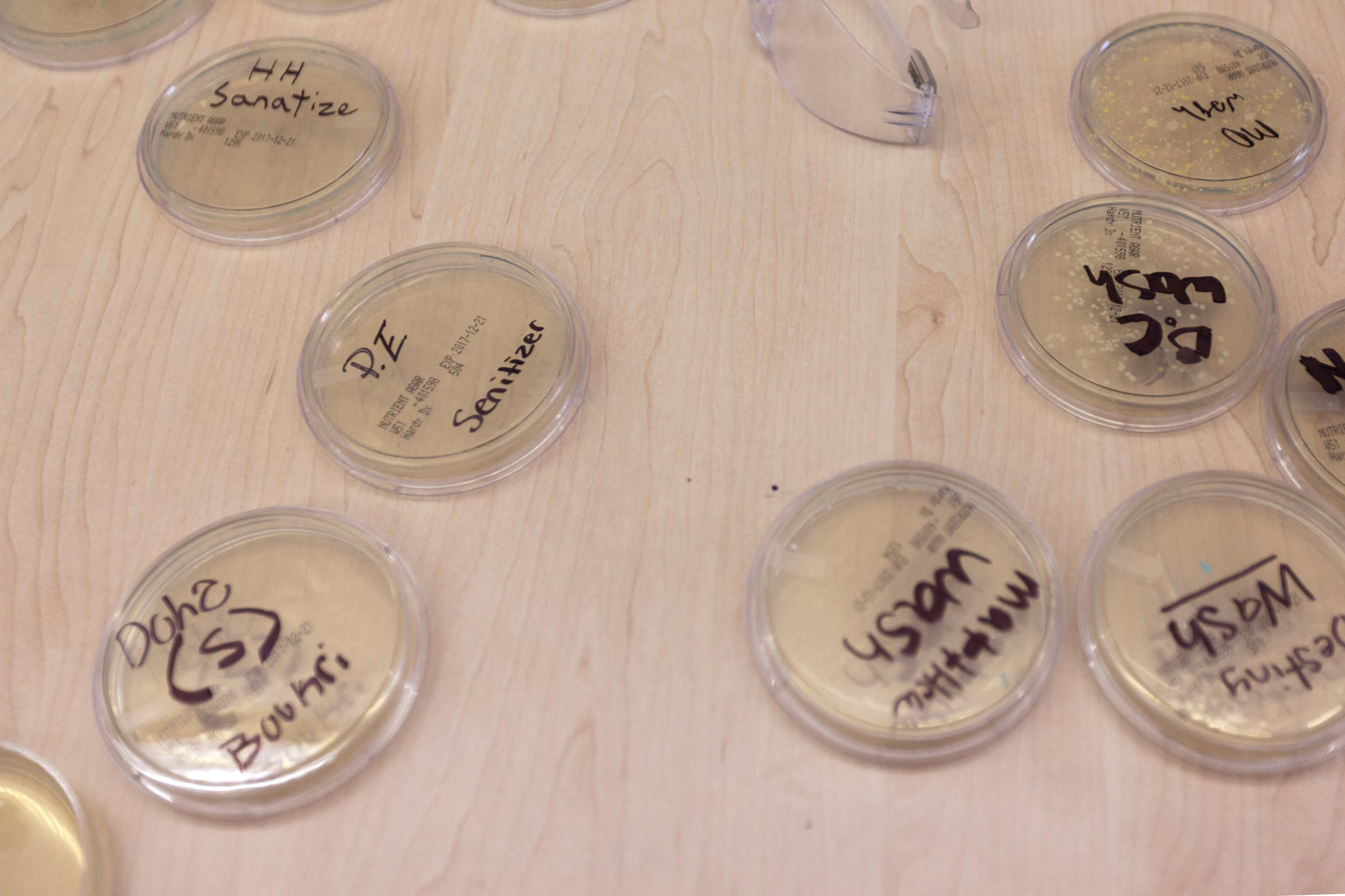


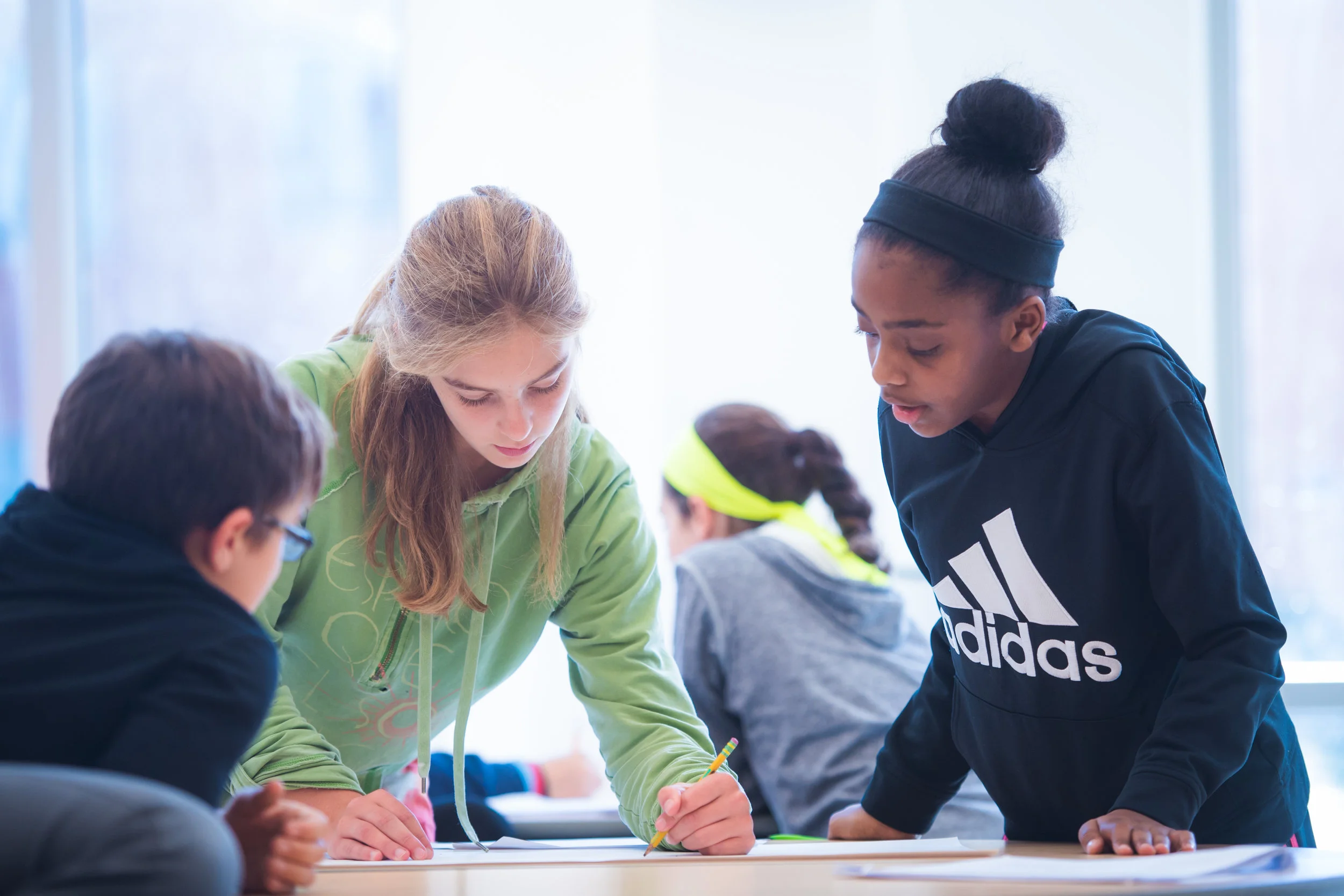
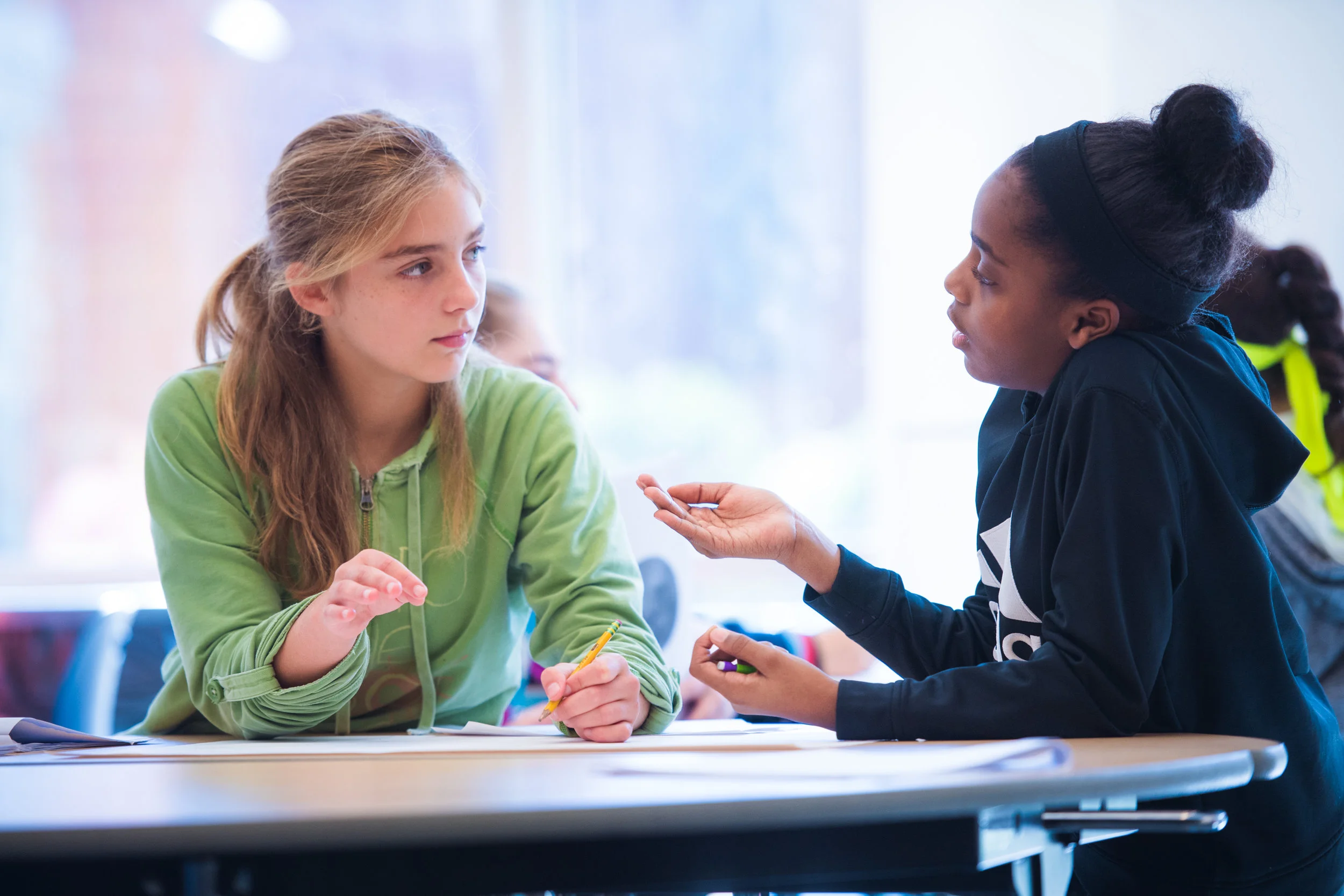

Cell Models
Student looks at a model of a cell

Student Looking into a Microscope
Student looks at a sample under the microscope
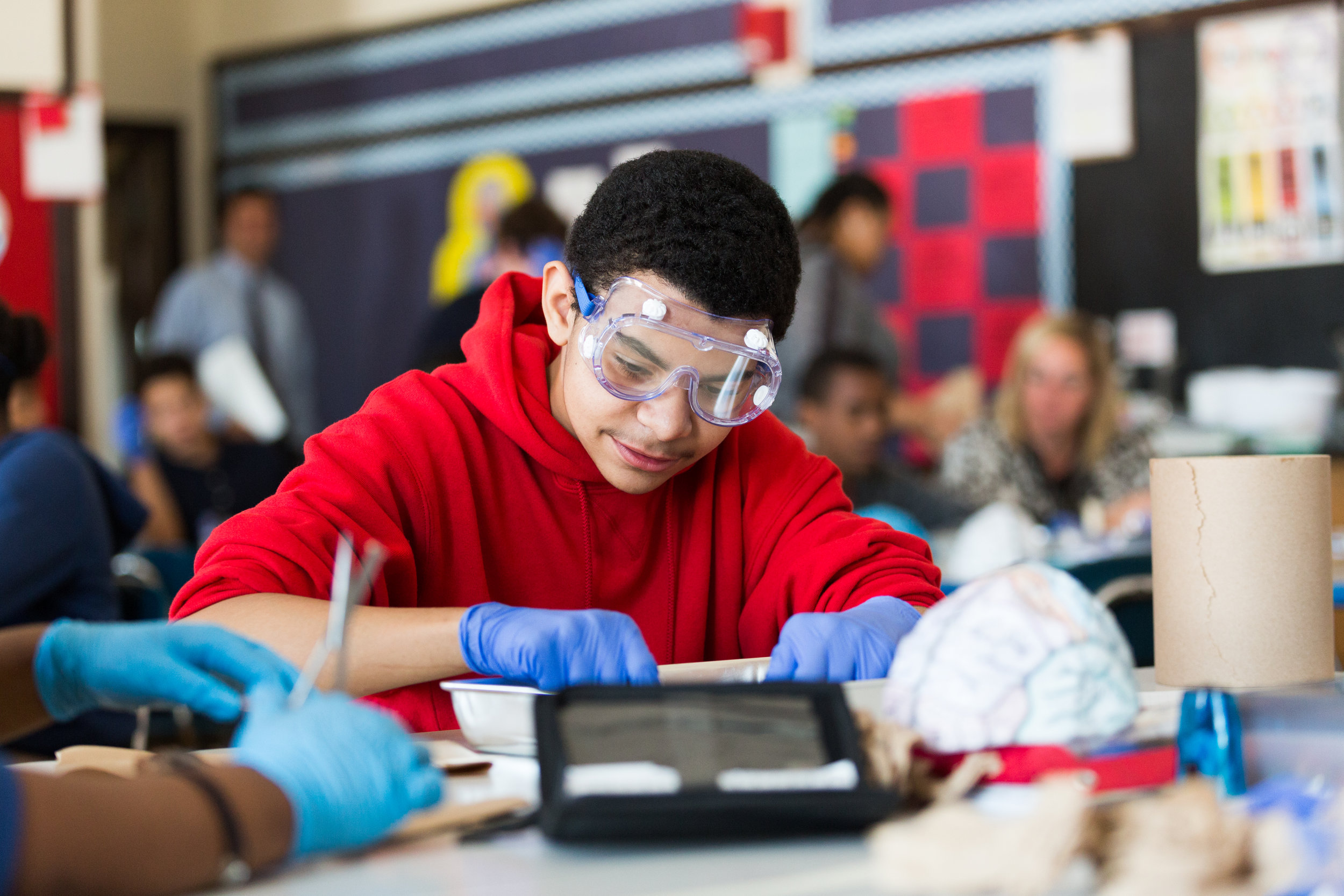

Adjusting the Magnification
Student adjusts the magnification on the microscope

Microscope
Student analyzes sample under the microscope





